Secretary Transition 2022 - Briefing Book 1: Overview
Notice to readers
This document contains information which has been redacted in accordance with provisions of Part 1 of the Access to Information Act and has been formatted to comply with the Canada.ca Content Style Guide and the Standard on Web Accessibility.
On this page
- Role of the Secretary of the Treasury Board
- The role and powers of the Treasury Board and the President
- Treasury Board at a Glance
- Treasury Board Secretariat at a Glance
- Office of the Chief Human Resources Officer at a Glance
- Office of the Comptroller General at a Glance
- Office of the Chief Information Officer at a Glance
- Office of Public Service Accessibility at a Glance
- The Canadian Digital Service at a Glace
- Centre for Greening Government at a Glance
- Expenditure Management Sector at a Glance
- Regulatory Affairs Sector at a Glance
- Program Sector at a Glance
- Enabling Functions at a Glance
Role of the Secretary of the Treasury Board
In this section
Overview: Treasury Board Secretariat
Mandate
The Treasury Board of Canada Secretariat provides advice and makes recommendations to the Treasury Board committee of ministers on how the government spends money on programs and services for Canadians. The Secretariat helps enable sound stewardship of Government of Canada funds, through the recommendations and advice provided to the Treasury Board.
Employee Overview
2,276 Full-Time Equivalent positionsFootnote 1
Total Budget
TBS: $3.2 billion in expenditures (2020-21 fiscal year)Footnote 2
Other Treasury Board Secretariat Deputies

Erin O’Gorman
Associate Secretary

Christine Donoghue
Chief Human Resources Officer

Roch Huppé
Comptroller General

Catherine Luelo
Chief Information Officer

Yazmine Laroche
Deputy Minister, Public Accessibility
The Roles of the Treasury Board and its Secretariat
Treasury Board
- Authority is derived from the Financial Administration Act
- Treasury Board Ministers make the final decision on expenditures and regulations
- Set the rules for the management of people, finances, technology and administration
-
The Treasury Board is the Cabinet Committee designated by the Prime Minister to make recommendations to the Governor General
- This means it functions as the Governor in Council for regulations and most orders in council (the Privy Council Office is responsible for orders in council for senior appointments)
- Typically meets weekly while Parliament is in session
Treasury Board Secretariat
- Key responsibilities are to provide integrated advice to Treasury Board ministers in the management and administration of government, and to fulfill the statutory responsibilities of a central government agency
-
To fulfill its mandate, the Treasury Board Secretariat organizes its business and resources around four core responsibilities:
- Spending Oversight
- Administrative Leadership
- Employer
- Regulatory Oversight
The Role of the Secretary
As the Secretary of the Treasury Board, your role will revolve around the following four themes:
Spending Oversight
- The government is responsible for over $380 billionFootnote 3 in planned budgetary expenditures and the Treasury Board plays a central role in the government decision-making process – therefore, high quality, timely advice to Ministers is needed when supporting the Treasury Board’s role in the expenditure management cycle.
- Exercising due diligence around the use of new money that has been set aside in the Budget, including for major procurements, new programs and grants and contributions
Administrative Leadership
- Working with the Treasury Board to establish the rule set for people, information technology, expenditure management and regulations
- Reviewing spending plans on departmental initiatives and making decisions that affect services to Canadians
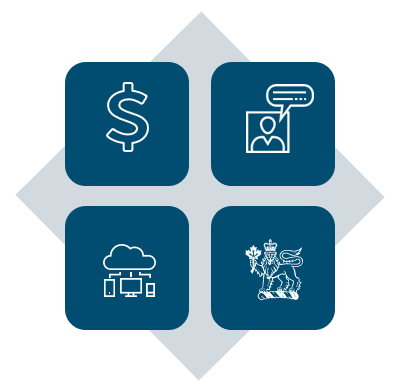
Employer
- Providing advice to the President of the Treasury Board on the terms and conditions of employment for the public service
- Leading collective agreements alongside experts within the Department
- The federal public service is Canada’s largest employer. The core public administration, which the Treasury Board employs, has about 245,000 employeesFootnote 4
Regulatory Oversight
- Establishing regulations that impact the health, safety and security of Canadians, the economy and the environment
- Over 50 government departments and agencies have regulatory responsibilities that impact the economy and lives of Canadians
The role and powers of the Treasury Board and the President
In this section
Treasury Board
The Treasury Board was first established as a committee of the Queen’s Privy Council for Canada on July 2, 1867, and was made a statutory committee in 1869. It is the only Cabinet committee recognized in legislation.
The Treasury Board consists of the President of the Treasury Board (the President), the Minister of Finance and four other members of the Queen’s Privy Council for Canada that are designated as members by an order in council. The composition of the Treasury Board is provided for in the Financial Administration Act, which also provides for the appointment of alternates who can serve in the place of members. The Treasury Board’s quorum is three members (including alternates).
The Treasury Board exercises authority over a range of issues and its role can generally be classified into powers of supervision, recommendation, decision, approval, reporting and regulation-making. While the primary statute setting out the role of the Treasury Board is the Financial Administration Act, there are over 20 other statutes that also establish its roles and authorities. The Treasury Board’s powers and responsibilities are also set out in regulations, orders in council, policies, guidelines and practices.
The Treasury Board has three principal roles:
- It acts as the government’s “Expenditure Manager”:
- preparing the government’s expenditure plans (the Estimates) and monitoring program spending by government departments
- approving the use of new money that has been set aside in the Budget, including for major procurements, assets, new programs and grants and contributions
- It acts as the government’s “Management Board”:
- setting the rules that establish how people, public funds and government assets are managed
- reviewing departmental investment plans in support of accountability of government operations
- It acts as the “Employer” of the core public administration:
- entering into collective bargaining for the core public administration
- determining terms and conditions of employment
- setting rules on human resources management
Treasury Board (Governor in Council)
Since December 2003, the members of the Treasury Board have also been asked to serve as members of the Committee of the Privy Council advising the Governor in Council. This role is often referred to as “Treasury Board, Part B”. The principal role of Treasury Board, Part B is to:
- Provide “Regulatory Oversight”:
- reviewing and approving most regulations and orders in council
When advising the Governor in Council, Treasury Board, Part B’s quorum is four members. The composition of the Treasury Board, Part B is not governed by the Financial Administration Act. In the absence of a sufficient number of Treasury Board members, other Cabinet ministers may be invited to participate.
President of the Treasury Board
Responsibilities and key accountabilities
The responsibilities assigned to the President as Chair of the Treasury Board are implicitly inseparable from the Treasury Board’s mandate: the management, expenditure and employer responsibilities that fall to the Treasury Board are also the President’s own responsibilities and form the basis for their key accountabilities. Appendix A provides further information about the legislative mandate and responsibilities of the Treasury Board and the President.
Specific responsibilities assigned directly to the President include:
- coordinating the activities of the Secretary, Comptroller General, Chief Human Resources Officer and the Chief Information Officer of Canada and delegating responsibility to the Secretary or other officials accordingly
- recommending external members of departmental audit committees
- establishing the form and tabling of the Public Accounts
- publishing a consolidated quarterly report on Crown corporations
- receiving and tabling a wide range of reports under legislation or Treasury Board policies
The Treasury Board may delegate to the President (in addition to other officials) any of the powers or functions it is authorized to exercise under any Act of Parliament or by any order made by the Governor in Council. The Treasury Board may make the delegation subject to terms and conditions it considers appropriate. In turn, the Financial Administration Act provides that such delegated powers can be further delegated. Any sub-delegation is subject to the terms and conditions of the original delegation.
Other statutes assign specific authorities to either the President or the Treasury Board. For example, the President has the authority to:
- establish policies and forms with respect to the administration of the Access to Information Actand thePrivacy Act
- administer components of the Official Languages Act
- administer components of the Public Servants Disclosure Protection Act
The Treasury Board’s authority to act as the employer for the core public administration is established under various statutes. As the Chair of the Treasury Board, the President supports the Treasury Board’s employer responsibilities. Legislation gives the Treasury Board the authority to:
- engage in collective bargaining under the Federal Public Sector Labour Relations Act
- make rules respecting deployments, probation, and promotion under the Public Service Employment Act
- set pay levels for Canadian Armed Forces members under the National Defence Act
Legislative portfolio
The President maintains overall responsibility for the statutes within their legislative portfolio. Should the government decide to amend these statutes, the President would be responsible for sponsoring any bills introduced in the House of Commons and tabling any required Government Response. Appendix B contains a list of statutes that fall under the President’s legislative portfolio.
Ministerial portfolioFootnote 5
The President is the Minister responsible for the Treasury Board of Canada Secretariat and the Canada School of Public Service. The Canada School of Public Service provides a common, standardized curriculum to support the learning and development of public servants.
Operating at arm’s length and reporting to Parliament through the President of the Treasury Board are the Public Sector Pension Investment Board, the Office of the Commissioner of Lobbying of Canada and the Office of the Public Sector Integrity Commissioner of Canada.
Treasury Board of Canada Secretariat
The Treasury Board of Canada Secretariat was established as a department in 1966 as the administrative arm of the Treasury Board. It supports the Treasury Board by making recommendations and providing advice on program spending, regulations and management policies and directives, while respecting the primary responsibility of Deputy Heads in managing their organizations and in their roles as accounting officers before Parliament. In this way, the Secretariat helps to strengthen government performance, results and reporting and supports good governance and sound stewardship.
The business lines of the Secretariat are expressed through its Departmental Results Framework. The Departmental Results Framework sets out the core responsibilities for the organization, which are:
- Spending Oversight
- Administrative Leadership
- Employer
- Regulatory Oversight
- Internal Services
The Departmental Results Framework also focuses on the results the department is aiming to achieve in these core areas as well as how progress will be assessed. This information helps support the Treasury Board of Canada Secretariat’s reporting to Parliament through its Departmental Plan and Departmental Results Report. The Departmental Plan, tabled in the spring, describes what the Treasury Board of Canada Secretariat will do over the next three years to achieve results for Canadians and the resources that are required to do so. The Departmental Results Report, tabled in the fall, describes the Treasury Board of Canada Secretariat’s actual performance and the resources it used during the previous fiscal year.
The Secretary of the Treasury Board
The Secretary of the Treasury Board is the Deputy Head of the Treasury Board of Canada Secretariat. The Secretary is appointed by the Governor in Council.
Subsection 12(1) of the Financial Administration Act sets out the powers assigned to Deputy Heads in the core public administration, which include, among others:
- determining the learning, training and development requirements of public service employees
- establishing standards of discipline and setting penalties (including termination of employment, suspension, demotion or financial penalties)
- providing for the termination of employment or demotion of public service employees for disciplinary reasons, unsatisfactory performance or other non-disciplinary reasons
The Secretary, as are all other Deputy Heads and chief executive officers, is an accounting officer pursuant to sections 16.1 through 16.4 of the Financial Administration Act. Accounting officers are senior officials that can be called to testify before a parliamentary committee regarding the management of their department and the performance of their duties.
Under section 16.5 of the Financial Administration Act, the Secretary has a role in providing guidance on the interpretation of policies, directives or standards issued by the Treasury Board in disputes between deputy heads (as accounting officers) and ministers.
Although the Secretary oversees the Treasury Board of Canada Secretariat, four other senior officials within the Secretariat, established under the Financial Administration Act or by Order in Council, have specific government-wide leadership responsibilities:
- the Comptroller General of Canada provides leadership, direction and oversight of financial management, internal audit and the management of assets and acquired services
- the Chief Human Resources Officer provides leadership on people management through policies, programs and strategic engagements; centrally manages labour relations, compensation, pensions and benefits; and contributes to the management of executives
- the Chief Information Officer of Canada provides leadership, direction and oversight of information management, information technology, government security, access to information, privacy and internal and external service delivery
- the Office of Public Service Accessibility provides leadership and strategic advice on accessibility in meeting the requirements of the Accessible Canada Act
The Treasury Board may delegate to the Secretary any of the powers or functions it is authorized to exercise under any Act of Parliament or by any order made by the Governor in Council (section 6(4) of the Financial Administration Act). The Treasury Board may also delegate some of its powers to the four other senior officials listed above, in addition to other officials (sections 6(4), (4.1) and (4.11) of the Financial Administration Act). Such delegated powers can be further delegated. Any sub-delegation is subject to the terms and conditions of the original delegation (section 6(6) of the Financial Administration Act).
Appendix A: Overview of the legislative mandate of the Treasury Board and the President
The Financial Administration Act is the primary statute that outlines the role of the Treasury Board and the President. Other federal laws also contain provisions that implicate the Treasury Board and the President.
Financial management and administrative policy
- General
- The Financial Administration Act provides that the Treasury Board may act for the Queen’s Privy Council for Canada on a number of items, including general administrative policy in the federal public administration, the organization of the federal public administration, financial management and the review of departmental spending plans and programs. The Act also provides for various powers of delegation.
- The Financial Administration Act also provides important rules for the financial administration of the Government of Canada, the establishment and maintenance of the accounts of Canada and the control of Crown corporations. A variety of other statutes also grant authorities to the Treasury Board on financial matters such as presenting financial statements to the Auditor General for audit and approving rates of remuneration, travel expenses and other allowances.
- The Appropriation Acts implement the Main Estimates and Supplementary Estimates. They are approved by the Treasury Board and tabled in the House of Commons by the President.
- Management of assets
- The Federal Real Property and Federal Immovables Act provides for the authorization and regulation of the acquisition, administration, and disposition of real property by or on behalf of the Crown. Under that Act, the Treasury Board is given authority to establish financial or other limits, restrictions or requirements respecting any real property transaction or class of transactions. Policies have been adopted ensuring proper stewardship of Crown property and maximization of value for any property acquired or disposed. Although the Act has delegated full authority to Ministers to complete most transactions, certain transactions are subject to Cabinet approval (Governor in Council) on the recommendation of the Treasury Board. The President acts as the Minister responsible for this Act.
- Access to information and privacy
- The Access to Information Act provides a right of access to records under the control of government institutions, requires a range of institutions to proactively publish specified information and establishes the Office of the Information Commissioner. The President is one of the Ministers designated by the Governor in Council for the purposes of the Act. As such, the President is responsible for:
- initiating a review of the Act every 5 years
- providing direction and guidance (e.g. through administrative policies) to government institutions regarding the operation of the Act and for reviewing the management of records under the control of government institutions to ensure compliance with the Act
- publishing the following annually:
- a list containing the names of government institutions, their responsibilities and the classes of records kept by them
- a summary report of statistics on institutional compliance with the Act
- The Privacy Act establishes rules to protect personal information held by government institutions, provides individuals with a right to access and correct their personal information that is held by government institutions and establishes the Office of the Privacy Commissioner. The President is the Minister designated by the Governor in Council for the purposes of certain provisions of the Act. As such, the President is responsible for:
- providing direction and guidance (e.g. through administrative policies) to government institutions regarding the operation of the Act
- reviewing the use of personal information banks and for reviewing the management of such banks to ensure compliance with the Act
- publishing annually an index of:
- personal information banks, including the names of government institutions controlling the banks and the purposes for which the personal information was collected
- classes of personal information that are not contained in personal information banks
- The Access to Information Act provides a right of access to records under the control of government institutions, requires a range of institutions to proactively publish specified information and establishes the Office of the Information Commissioner. The President is one of the Ministers designated by the Governor in Council for the purposes of the Act. As such, the President is responsible for:
- Official languages
- The Treasury Board is responsible for the general direction and coordination of the policies and programs relating to the implementation of Part IV (Communications with and Services to the Public), Part V (Language of Work) and Part VI (Participation of English-Speaking and French-Speaking Canadians) of the Official Languages Act within all federal institutions, except:
- the Senate
- the House of Commons
- the Library of Parliament
- the Office of the Senate Ethics Officer
- the Office of the Conflict of Interest and Ethics Commissioner
- the Parliamentary Protective Services
- the Office of the Parliamentary Budget Officer
- The President must submit an annual report to Parliament concerning the implementation of these programs. The President may also be designated by the Governor in Council to undertake public consultations on proposed regulations.
- The Treasury Board is responsible for the general direction and coordination of the policies and programs relating to the implementation of Part IV (Communications with and Services to the Public), Part V (Language of Work) and Part VI (Participation of English-Speaking and French-Speaking Canadians) of the Official Languages Act within all federal institutions, except:
- Auditor General
- The Auditor General Act establishes the position of Auditor General, who is responsible for verifying the accuracy of the government’s financial statements and providing Parliament with independent information, assurance, and advice regarding the stewardship of public funds. With respect to the Auditor General, the President:
- Tables the Public Accounts of Canada in the fall, which contain the Auditor General’s opinion on the government’s financial statements. The Auditor General also issues a Commentary on the Financial Audits which includes the observations from the financial statement audit.
- Leads the Government of Canada’s public response to performance audits conducted by the Auditor General, which determine whether the government is appropriately managing its activities and resources. The findings of performance audits are summarized in the Auditor General’s reports, which are generally tabled in Parliament twice per year (spring and fall). Prior to tabling, the Auditor General typically offers to meet with the President to provide an overview of the audits implicating the Treasury Board of Canada Secretariat. The President briefs Cabinet on the findings of the Auditor General’s performance audits and discusses communications strategies. If an audit implicates the Treasury Board of Canada Secretariat, the President will also issue a specific response relating to its findings.
- Receives copies of the Auditor General’s special examinations, which determine whether Crown corporations are managed efficiently and effectively, and whether their assets are reasonably safeguarded. Special examinations must be conducted at least once every 10 years for each Crown corporation and the results are generally tabled in Parliament annually as part of the Auditor General’s spring reports.
- The Auditor General Act establishes the position of Auditor General, who is responsible for verifying the accuracy of the government’s financial statements and providing Parliament with independent information, assurance, and advice regarding the stewardship of public funds. With respect to the Auditor General, the President:
- Red tape reduction
- The Red Tape Reduction Act provides that the President may establish policies or issue directives respecting the way the One-for-One Rule is applied. The One-for-One Rule requires federal government regulators to offset the cost increases of administrative burdens on businesses and remove one regulation for every new regulation added that imposes an administrative burden. The President is also responsible for publishing a report each year and causing a review of the Act to be conducted five years after its coming into force. A review of the Act is currently underway. The Regulations provide that the Treasury Board may exempt a regulation from the One-for-One Rule in certain circumstances.
-
Service Fees Act
- The Service Fees Act requires responsible authorities, before certain fees are fixed, to develop fee proposals for consultation and to table them in Parliament. It also requires that performance standards and procedures for refunding certain fees be established in accordance with Treasury Board policies or directives. It adjusts certain fees on an annual basis in accordance with the Consumer Price Index. Furthermore, it requires responsible authorities to table a report on their fees in Parliament in accordance with Treasury Board policies and directives. Finally, the President is required to publish a report that consolidates the information set out in the reports tabled in Parliament.
Human resources management
- General
- The Treasury Board acts as the Employer for the core public administration and as such, the Financial Administration Act gives it general responsibility for the organization of the public service and personnel management within the public administration, including the determination of the terms and conditions of employment of persons employed in it. It further allows the Treasury Board to delegate to the Chief Human Resource Officer any of its powers and functions—other than its power to make regulations—in relation to human resources management, official languages, employment equity, values and ethics and its authorities under the Public Service Employment Act.
- The Financial Administration Act also provides direct authority for certain aspects of personnel management in the hands of deputy heads, subject to policies and directives of the Treasury Board. Deputy head responsibilities include determining learning and developmental requirements, providing awards and setting standards of discipline and imposing penalties (up to and including termination) and the termination or demotion of employees for unsatisfactory performance or other non-disciplinary reasons.
- Staffing
- The Public Service Employment Act provides for the appointment of public servants in the public service and other related matters.
- Under the Act, staffing in the public service is based on the core values of merit, excellence, non-partisanship, representativeness and the ability to serve members of the public with integrity in the official language of their choice. The Act defines merit, attributes certain functions directly to the employer and creates arrangements for staffing recourse. The Public Service Commission conducts investigations and audits on matters within its jurisdiction.
- The Federal Public Sector Labour Relations and Employment Board is responsible for the resolution of staffing complaints related to internal appointments and layoffs in the federal public service.
- Labour relations
- The Federal Public Sector Labour Relations Act establishes a labour relations regime within the public service, provides for the negotiation of collective agreements with unions representing public servants and establishes a grievance process for public servants. The Act provides for a labour relations regime based on cooperation and consultation between the employer and bargaining agents, notably by requiring labour-management consultation committees, enabling co-development of workplace improvements and enhancing reconciliation. The Act also establishes an essential services regime whereby, although the employer determines the level at which services are to be provided during a strike, an essential services agreement must be entered between the employer and the bargaining agent prior to the bargaining agent being in a strike position. The Act provides for the establishment of informal conflict resolution within departments and for comprehensive grievance provisions.
- The Federal Public Sector Labour Relations Act was amended in 2017 to include a new collective bargaining and labour relations regime for the Royal Canadian Mounted Police.
- The Federal Public Sector Labour Relations and Employment Board is responsible for administering the collective bargaining and grievance adjudication systems in the federal public service.
- Employment equity
- The Employment Equity Act aims to ensure that members of designated groups (women, Aboriginal peoples, persons with disabilities, and members of visible minorities) are equitably represented in both the federal public service and the federally-regulated private sector (which includes airlines, interprovincial rail, ship or ferry operations, radio broadcasting stations and banks). While the Minister of Labour is the responsible minister, the Act specifies that the Treasury Board and the Public Service Commission are responsible for carrying out obligations in the Act, as employer. Moreover, the Treasury Board plays an important role in the implementation of the Act for the Canadian Armed Forces, the Royal Canadian Mounted Police and the Canadian Security and Intelligence Service. The President is responsible for tabling in Parliament an annual report on the state of employment equity in the public service.
- Disclosure of wrongdoing and reprisal protection
- The Public Servants Disclosure Protection Act establishes a regime to enable public servants to make disclosures of information that they believe could show that a wrongdoing has occurred in relation to the public sector. The regime includes access to the Public Sector Integrity Commissioner. The Act also provides protection from reprisal to public servants who have made a disclosure under the Act.
- The Treasury Board, as required by the Act, has created a code of conduct for the public sector. The Treasury Board is also responsible for approving the procedures for handling disclosures that must be set up by certain public sector organizations that are excluded from the Act (the Canadian Armed Forces, the Canadian Security Intelligence Service and the Communications Security Establishment).
- Under the Act, the President is responsible for:
- promoting ethical practices in the public sector, fostering a positive environment for making disclosures and disseminating information about the Act and its processes
- tabling annually in each House of Parliament a report prepared by the Chief Human Resources Officer that provides an overview of activities regarding certain disclosures made under the Act
- Health and safety
- Part II of the Canada Labour Code creates a regime of requirements and recourse to prevent work-related accidents and sickness that is applicable to employers and employees subject to federal jurisdiction. The Treasury Board is currently the largest employer subject to Part II of the Code.
- Pensions
- The Treasury Board and the President have responsibilities in relation to a number of legislated pension plans.
- The President is the responsible Minister for:
- the Public Service Superannuation Act, which provides pension benefits to public service employees and their survivors; it is compulsory for all members of the public service (including some Crown Agencies and Crown corporations) and provides a defined benefit plan based on years of pensionable service and salary
- the Members of Parliament Retiring Allowances Act, which provides pension benefits to Senators and Members of the House of Commons and their survivors
- the Diplomatic Service (Special) Superannuation Act, an act to provide superannuation benefits for senior appointees of the Department of Foreign Affairs, Trade and Development serving outside of Canada
- certain sections of the Public Pensions Reporting Act, which require the Chief Actuary to conduct actuarial reviews and issue valuation reports in respect of prescribed pension plans
- the Public Service Pension Adjustment Act, which provides a framework to adjust for persons in receipt of more than one public service pension
- the Special Retirement Arrangements Act, which authorizes the establishment of retirement compensation arrangements
- the Supplementary Retirement Benefits Act, which provides for pension indexing
- the Public Sector Pension Investment Board Act, which establishes the Public Sector Pension Investment Board; since March 31, 2000, contributions made by the government and employees are invested in securities markets under the Public Service Superannuation Act, the Royal Canadian Mounted Police Superannuation Act and the Canadian Forces Superannuation Act plans
- The Canadian Forces Superannuation Act, Defence Services Pension Continuation Act, Royal Canadian Mounted Police Superannuation Act and the Royal Canadian Mounted Police Pension Continuation Act provide pension benefits to all Canadian Armed Forces personnel, to members of the Royal Canadian Mounted Police and their survivors and to retired officers of the military/Royal Canadian Mounted Police who were part of the old Defence Services Pension Act and Royal Canadian Mounted Police Act and their survivors. The Minister of National Defence and the Minister of Public Safety and Emergency Preparedness are responsible for each of their respective plans. However, the President is accountable to Parliament for funding and financial policies for these plans and thus has a shared responsibility.
-
Pay Equity Act
- The Pay Equity Act came into force on August 31, 2021. The Act creates a proactive pay equity regime that applies to the federal public service as well as to federally regulated businesses in Canada. The Act requires employers to establish and maintain a pay equity plan and to identify and correct differences in compensation between predominantly male and predominantly female job classes where the work performed is of equal value. Under the Act, the Treasury Board of Canada is the employer for the core public administration, the Canadian Forces and the Royal Canadian Mounted Police and will be responsible for developing and maintaining the pay equity plans for these workplaces. The Treasury Board of Canada Secretariat may be called on to provide guidance to separate agencies in the establishment of their plans.
Government ethics and lobbying
-
Conflict of Interest Act
- The Conflict of Interest Act establishes ethical rules for public office holders to protect the integrity of government decision-making. The Conflict of Interest and Ethics Commissioner administers the Act by reviewing confidential reports submitted to their Office, investigating possible contraventions of the Act and tabling reports to Parliament. Although the Act does not assign any specific legislative responsibilities to the President, the Act falls under the President’s legislative portfolio.
-
Lobbying Act
- The Lobbying Act establishes the Office of the Commissioner of Lobbying and provides for the appointment of the Commissioner of Lobbying. The Commissioner of Lobbying is mandated to establish and maintain the registry of lobbyists, which includes information about all registered lobbyists as well as their activities. Although the Act does not assign any specific legislative responsibilities to the President, the Act falls under the President’s legislative portfolio.
Appendix B: Legislative portfolio of the President
Statutes for which the President is named as responsible Minister:
- Access to Information Act (note: the President’s responsibility is shared with the Minister of Justice)
- Alternative Fuels Act
- Auditor General Act
- Canada School of Public Service Act
- Conflict of Interest Act
- Diplomatic Service (Special) Superannuation Act
- Federal Real Property and Federal Immovables Act
- Government Services Act, 1999
- Government Services Resumption Act
- Lieutenant Governors Superannuation Act
- Lobbying Act
- Members of Parliament Retiring Allowances Act
- Privacy Act (note: the President’s responsibility is shared with the Minister of Justice)
- Public Pensions Reporting Act (note: the President’s responsibility is shared with the Minister of Employment and Social Development)
- Public Sector Compensation Act
- Public Sector Pension Investment Board Act
- Public Servants Disclosure Protection Act
- Public Service Employment Act (note: The President’s responsibility is shared with the President of the Queen’s Privy Council for Canada and the Minister of Canadian Heritage)
- Public Service Pension Adjustment Act
- Public Service Superannuation Act
- Red Tape Reduction Act
- Special Retirement Arrangements Act
- Supplementary Retirement Benefits Act
Treasury Board at a Glance
In this section
About the Treasury Board
Established in 1867, the Treasury Board is the only statutory Cabinet Committee. It has 2 distinct functions:
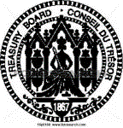
Part A: Management Board
Makes decisions about:
- funds (expenditure manager)
- authorities, rules and compliance (management board)
- people (employer)
Treasury Board responsibilities are delegated by the Financial Administration Act, which creates the Board’s public service support: Secretary, Comptroller General, Chief Human Resources Officer and Chief Information Officer
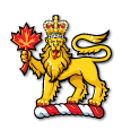
Part B: Governor in Council
Since 2003, the Treasury Board has been designated as the Cabinet Committee responsible for considering Governor in Council matters
Makes recommendations to the Governor General about:
- regulations
- most orders in council (i.e. non-appointment orders in council)
In addition to the Financial Administration Act, over 20 other statutes establish the Treasury Board’s roles and authorities. Powers and responsibilities are also set out in regulations, Orders in Council, policies, guidelines and practices
Where Treasury Board fits
Between the genesis of a policy idea and its implementation by a department, Ministers must secure certain approvals to ensure policy alignment, affordability and feasibility
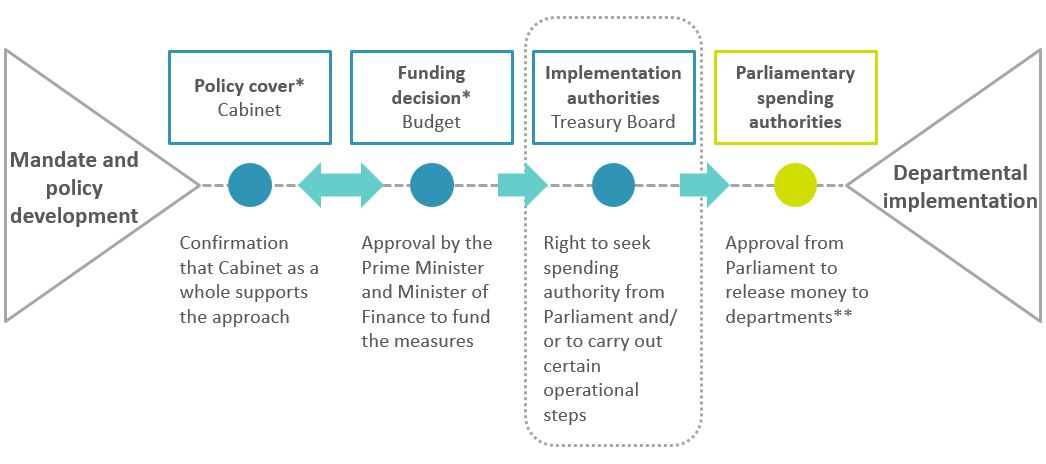
Text version
The graphic presents the process from policy idea to implementation by a department. The first step is mandate and policy development. The second step is policy cover by Cabinet, which includes confirmation that Cabinet as a whole supports the approach. The third step is a funding decision through the Budget, which includes approval by the Prime Minister and the Minister of Finance to fund the measures. The fourth step is implementation authorities by Treasury Board, which includes the right to seek spending authority from Parliament and/or to carry out certain operational steps. The fifth step is parliamentary spending authorities, which includes approval from Parliament to release money to departments. The final step is departmental implementation.
The fourth step (implementation authorities by Treasury Board) is circled to indicate where Treasury Board fits within the process.
*Policy cover and the funding decision are not always sought in the same order
**Parliamentary approval is obtained through supply bills, which include multiple spending proposals
Combined, these key decisions help ensure the Government can deliver its agenda effectively
How Treasury Board helps implement the government’s agenda
Cabinet focuses on the what. . .
For example:
- Helps formulate government agenda and set priorities and strategy (e.g. parliamentary, communications)
- Approves policy and legislative proposals
- Government-wide issues management and communications
- Approves most Governor in Council appointments (judicial and non-judicial)
- Reviews progress against the key commitments (in some cases)
. . . the Treasury Board focuses on the how
For example:
- Ensures all initiatives respect the Financial Administration Act and Government of Canada policies
- Ensures departmental implementation plans and resource requests are reasonable
- Approves changes to departmental budgets via the Estimates process
| Alignment | Design | Value | Risk | Implementation Capacity | Impact |
|---|---|---|---|---|---|
| Does the proposal align with the government’s policy goals? | How is the program or regulation designed? | Does the proposal represent good value? | Are solid risk mitigation plans in place for the overall risks of the proposal? | Does the proposal work within the department’s existing administrative capacity? | Will it achieve outcomes? How will these be measured? |
Key features of the Treasury Board
Treasury Board ensures financial and Treasury Board policy suite compliance at the program design stage
Ministers play a corporate role as opposed to representing their own departmental priorities
High-volume Cabinet committee with a wide scope of decision-making authority
- The Treasury Board takes approximately 1,400 decisions per year
Treasury Board Secretariat officials present proposals, unlike at Cabinet, where Ministers present their proposals
- Officials’ advice is provided to all Treasury Board Ministers, not just the Chair
The roles of the Treasury Board
| Part A | Part B | ||
|---|---|---|---|
| Expenditure Manager | Management Board | Employer | Regulatory Oversight |
|
|
|
|
Table 2 Notes
|
|||
Role 1: Expenditure manager
- The Treasury Board decisions on new and existing funds play a role in determining the amount of money departments can spend and how they can spend it
-
The Treasury Board also plays a central role in how the government plans and reports its spending (“the business of supply”)
- This includes approving departmental requests for funds to be included in the Estimates for spending approval from Parliament
- Statutory authorities are those that Parliament has approved through existing legislation. This spending is included in the Estimates for information only
Top 3 major statutory spending items
Main Estimates 2021-22
Old Age Security
$47.2 billion
Canada Health Transfer
$43.1 billion
Fiscal Equalization
$20.9 billion
Top 3 major non-statutory spending items
Main Estimates 2021-22
National Defence Operations and Programs
$16.4 billion
Indigenous Services Canada Grants and Contributions
$11.3 billion
Public Health Agency Operating and Program
$8.2 billion
Source: GC InfoBase, TBS-Expenditure Management Sector. Note: total may not add up due to rounding.
Role 2: Management board
Treasury Board policies and decisions have a significant impact on how the government is managed. The majority of proposals reviewed by the Treasury Board fall within the following categories:
What we own
Assets
The government owns a wide range of assets required to fulfill its obligations and meet the needs of Canadians
These assets can range from search and rescue aircraft, international bridges and real property, such as police stations, historic sites and the Parliamentary precinct
What we buy
Procurement
The government requires goods and services to sustain its operations
Examples of goods and services can include Coast Guard vessels, military equipment, computer systems and professional services, such as physicians or engineers
What we support
Transfer payments
The government transfers funds to other orders of government, third party organizations and Canadians
Examples can include transferring funds to support municipal infrastructure, Indigenous education and newcomers to Canada
Role 2: Management board and Treasury Board policy suite
In addition to assets, procurement and transfer payments, Treasury Board policies cover other areas of government:
Results, evaluation and internal audit
Measures to assess performance and support decisions, and helps ensure the public receives information on outcomes
Financial management
Outlines safeguards and ensures proper use and accountability of public funds
People management and official languages
Manages the workforce and workplace, and supports equality of English and French through communications and services
Service and digital
Supports the management of service delivery, information and data, information technology and cyber security in the digital era
Communications
Sets rules for how government communicates with the public (e.g. advertising, social media, public opinion research and web)
Government security
Supports protection of government operations and the people, information and assets that support them
Through its policy suite (31 policies), the Treasury Board has a number of levers to promote management excellence and strong stewardship
Role 3: Employer
The Treasury Board, as the employer, has an overarching responsibility for the human resources management and financial compensation of the core public administration, which comprises about 245,000 federal public service employees
As Employer, The Treasury Board is responsible for:
- overseeing negotiation and authorization for approval of 28 collective agreements, with 17 different bargaining agents
- determining terms and conditions of employment, including pensions and benefits
- setting compensation and terms and conditions of employment for unrepresented employees such as executives
- setting policy direction on people management and official languages issues, such as employment equity and learning
Role 4: Regulatory oversight
The Treasury Board (Part B) is responsible for considering Governor in Council matters: regulations and non-appointment orders in council
RegulationsApproximately 100 to 200 per year |
|
|---|---|
Orders in councilApproximately 200 to 300 per year |
|
Conclusion
The Treasury Board exercises 4 roles within 2 distinct functions:
Part A
- Expenditure Manager
- Management Board
- Employer
Part B
- Regulatory Oversight (including Governor in Council matters)
- Treasury Board Secretariat officials support the process by presenting cases to the Board, and providing integrated advice and administrative support
Annex A: How the Treasury Board works
Due diligence
Submissions reviewed for:
- clarity, completeness and quality
- business case and value for money
- compliance with existing legal and policy requirements
- program operations and viability
- risk and mitigation
- design and implementation
- international alignment
- regulatory quality and adherence to the Cabinet Directive on Regulation
Secretariat provides advice
In advance of meetings, Treasury Board Ministers receive copies of:
- sponsoring Ministers’ signed submissions
- Secretariat’s advice
- regulatory proposals and Order in Council submissions
Cases are presented at the Treasury Board
Process:
- not all cases are formally presented or discussed
- secretariat officials present the cases flagged for discussion
- members can ask for any case to be presented
Secretariat officials answer questions on any item
Treasury Board Ministers challenge and decide
For Part A, members either:
- approve as proposed
- approve with conditions
- defer the decision
- do not approve
For Part B, members:
- consider draft regulations for public comment (beginning of process)
- consider regulations for final approval (end of process)
- Part B decisions are only to approve or not approve
Annex B: Examples of Treasury Board business
New funds
(e.g. Treasury Board submissions seeking access to funds for a department, following a funding decision in the Budget)


Corporate and business plans
(e.g. approval of corporate plans for Crown corporations)
Grants and contributions
(e.g. approval to provide transfers to people, other governments, and organizations for infrastructure)


Human resources approvals
(e.g. pension and benefits administration, creation of Assistant Deputy Minister-level positions)
Investment plans and project approvals
(e.g. a new information technology project)


Treasury Board policies
(e.g. approval, amendments, rescinding, exceptions and exemptions to any of the Treasury Board policies)
Contract and real property approvals
(e.g. purchasing a new building)


Other
(e.g. write-off and remission order, adjustments or establishment of user fees)
Treasury Board Secretariat at a Glance
In this section
- Overview of the Treasury Board Secretariat
- Central agency and departmental functions
- Senior Management Team
- Treasury Board Secretariat
- Office of the Chief Human Resources Officer
- Office of the Comptroller General
- Office of the Chief Information Officer
- Office for Public Service Accessibility
- Centre for Greening Government
- Canadian Digital Service
- Supporting the Treasury Board directly
- Enabling functions
- Annex: The Treasury Board Secretariat during COVID‑19
Overview of the Treasury Board Secretariat
The Treasury Board Secretariat has 2,276 employees and plays a central coordinating function for the Government of Canada, promoting coherence across programs and services
| Central agency | Department |
|---|---|
| Sets the government-wide management agenda and provides guidance to departments on a wide range of management issues | As a department, it is subject to this agenda and guidance |
| Performs a challenge function and advises Ministers on proposals brought forward by departments (e.g. on Memoranda to Cabinet, Budget items, and Treasury Board submissions) | Submits proposals to Cabinet for the President’s own initiatives |
Central agency and departmental functions
Central agency
The central agency function supports the Treasury Board’s mandate. This role is generally carried out by the following groups:
Department
Enabling functions support the smooth operation of the Treasury Board Secretariat. These functions are carried out mainly by the following groups:
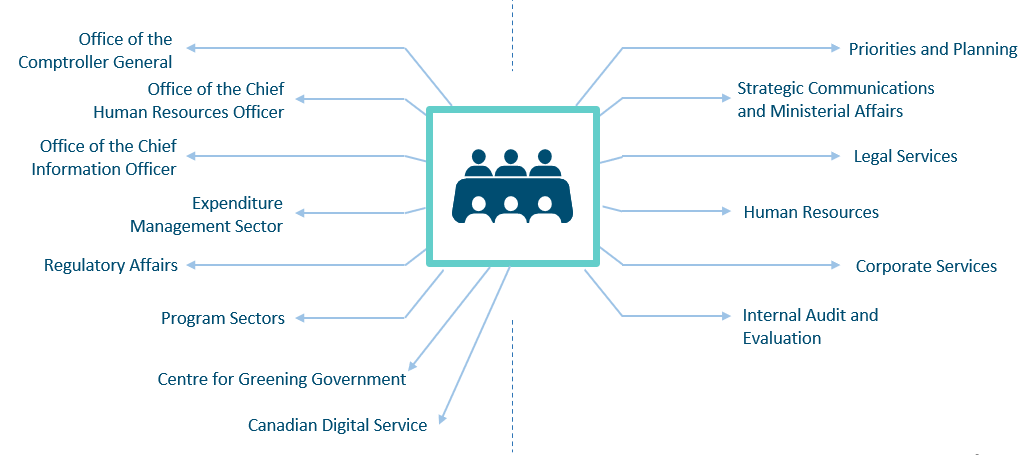
Text version
Central agency
- Office of the Comptroller General
- Office of the Chief Human Resources Officer
- Office of the Chief Information Officer
- Expenditure Management Sector
- Regulatory Affairs
- Program Sectors
- Centre for Greening Government
- Canadian Digital Service
Department
- Priorities and Planning
- Strategic Communications and Ministerial Affairs
- Legal Services
- Human Resources
- Corporate Services
- Internal Audit and Evaluation
Senior Management Team

The Honourable
Mona Fortier
President of the Treasury Board

The Honourable
Greg Fergus
Parliamentary Secretary

Matthew Partridge
Departmental Assistant

Graham Flack
Secretary of the Treasury Board

Erin O’Gorman
Associate Secretary
Program Sectors and Policy Sectors

Anuradha Marisetti
Economic

Suzy McDonald
Social & Cultural

Heather Sheehy
Government Operations

Denis Stevens
International Affairs, Security and Justice

Tina Green
Regulatory Affairs

Annie Boudreau
Expenditure Management
Office of the Chief Information Officer

Catherine Luelo
Chief Information Officer

Paul Wagner
Transformation and Interim Chief Technology Officer

Sonya Read
A/Digital Policy and Services
Canadian Digital Service

Anatole Papadopoulos
Acting Chief Executive Officer
Centre for Greening Government

Nick Xenos
Executive Director
Office for Public Service Accessibility

Yazmine Laroche
DM, Public Service Accessibility

Alfred MacLeod
ADM, Public Service Accessibility
Enabling Functions

Kelly Acton
Strategic Comms. and Ministerial Affairs

Karen Cahill
Corporate Services Chief Financial Officer

Mallika Nanduri Bhatt
Priorities & Planning

Doreen Gagnon
Human Resources

Nathalie Lalonde
Internal Audit and Evaluation
Office of the Chief Human Resources Officer

Christine Donoghue
Chief Human Resources Officer

Marie-Chantal Girard
Employee Relations and Total Compensation

Carole Bidal
Employee Relations and Total Compensation

Jean-Francois Fleury
Research, Planning and Renewal

Stephanie Poliquin
People Management Systems and Processes

Mireille Laroche
Workplace Policies and Services, Executive and Leadership Development, Centre for Diversity and Inclusion
Office of the Comptroller General

Roch Huppé
Comptroller General

Samantha Tattersall
Acquired Services and Assets

Monia Lahaie
Financial Management

Mike Milito
Internal Audit

Christine Walker
Financial Management Transformation

François Nadeau
Senior General Counsel
Treasury Board Secretariat

Graham Flack, Secretary of the Treasury Board
Deputy Head of the Treasury Board Secretariat
Supported by an Associate Secretary and four other Deputy Ministers

Erin O’Gorman, Associate Secretary
Works with the Secretary, providing leadership on the management of the Treasury Board Cabinet Committee
The Secretary and Associate Secretary lead the Treasury Board Secretariat, which is divided into six thematic areas:
- Human Resources
- Comptrollership
- Information (including digital)
- Accessibility
- Direct support to the Treasury Board
- Enabling functions
Office of the Chief Human Resources Officer
The Chief Human Resources Officer is responsible for government-wide direction and leadership on people management to recruit and retain talent, support a work environment in which employees can thrive, and manage human resources using the best possible tools and evidence

Christine Donoghue
Chief Human Resources Officer
The Office of the Chief Human Resources Officer supports the Treasury Board’s mandate by:
- developing policies and providing strategic direction, and its enabling systems and processes, for people and workplace management in the public service
- leading negotiations with bargaining agents and managing total compensation to ensure fair and sustainable terms for collective agreements, pensions and benefits
- establishing terms and conditions of employment, including the management of talent and performance for the executive cadre
- monitoring the conditions of the workplace and workforce through data acquisition and analysis
- leading the heads of the Human Resources community to foster collaboration, innovation and coherence across the Government of Canada
Key policies:
- The Policy on People Management sets expectations for Deputy Heads and managers in the core public administration to create a high-performing workforce and a modern, healthy and respectful work environment
- The Policy on the Management of Executives sets the expectations specific to the management of the executive cadre in the core public administration
- Policies for Ministers’ Offices provides coherence and transparency for financial, personnel and administrative management
Office of the Comptroller General
The Comptroller General is responsible for government-wide direction and leadership on comptrollership, in the areas of financial management, management of assets, and internal audit

Roch Huppé
Comptroller General
The Office of the Comptroller General supports the Treasury Board’s mandate by:
- developing policies and providing government-wide coordination and strategic direction for comptrollership in the public service, including internal audit, financial management, project management and the management of procurement and real property
- providing strategic direction and oversight for Chief Financial Officers and Chief Audit Executives across the Government of Canada
- providing proactive analysis and recommendations on management and policy issues such as departmental management and spending authorities and contributing to government-wide oversight by providing assurance and advice
- providing analysis and advice on Treasury Board submissions, including on cost estimates and financial risks
Key policies:
- The Policy on Financial Management, which provides key responsibilities for Deputy Heads, Chief Financial Officers, and other senior managers in exercising effective financial management
- The Policy on Transfer Payments, which explains the roles and responsibilities for the delivery and management of transfer payment programs
- The Policy on the Planning and Management of Investments, which sets the direction for the planning and management of assets and acquired services to ensure that these activities provide value for money and demonstrate sound stewardship in program delivery
- The Policy on Internal Audit, which sets out the responsibilities for deputy heads, chief audit executives and departmental audit committees, in demonstrating responsible stewardship through sound risk management, control and governance processes
Office of the Chief Information Officer
The Chief Information Officer is responsible for the planning and management of technology and the stewardship of information and data for the Government of Canada

Catherine Luelo
Chief Information Officer
The Office of the Chief Information Officer of Canada supports Treasury Board’s mandate by:
- developing policies and strategic direction on digital transformation, service delivery, security, information management and information technology in the public service
- providing analysis and advice on Treasury Board submissions, including on the use of digital technology and issues related to privacy
- working with departments and agencies to improve their digital service capacity, support the use of digital approaches in government operations and develop tools and resources to meet users’ needs
- leading the Government of Canada Chief Information Officers community to advance the adoption of best practices for information management and digital and service delivery
Key policies:
- The Policy on Service and Digital serves as an integrated set of rules on how the Government of Canada manages service delivery, information and data, information technology and cyber security
- The Policy on Government Security, which provides direction to manage government security in support of the trusted delivery of Government of Canada programs and services and the protection of information
Office for Public Service Accessibility
The Deputy Minister of Public Service Accessibility is responsible for supporting the Canadian public service in meeting the requirements of the Accessible Canada Act

Yazmine Laroche
Deputy Minister
The Office for Public Service Accessibility supports the Treasury Board Secretariat’s mandate by:
- providing strategic advice to government departments and agencies regarding issues related to accessibility and inclusion through:
- equipping public servants with knowledge on how to better design and deliver accessible programs and services
- providing practical guidance and tools for removing barriers through initiatives such as the Centralized Enabling Workplace Fund and online via an Accessibility Hub
- providing strategic advice, informed by engagement with persons with disabilities, to government departments and agencies
- improving recruitment, retention and promotion of persons with disabilities
- enhancing the accessibility of the physical workspace
- making technology usable by all
Centre for Greening Government
The Centre for Greening Government works to ensure the Government of Canada is a global leader in government operations that are net-zero emissions, climate-resilient, and green

Nick Xenos
Executive Director
The Centre for Greening Government supports the Treasury Board Secretariat’s mandate by:
-
providing strategic advice to other federal departments and agencies regarding net-zero, resilient and green operations through:
- providing practical guidance and tools for net-zero, resilient and green real property, fleet, and procurement
- convening interdepartmental working groups and external stakeholder community of practices to share expertise, successes, and best practices among departments
- tracking and publicly disclosing government environmental performance information, including greenhouse gas emission reductions for federal operations
- administering the Greening Government Fund to reduce emissions and support projects that can be replicated within and across departments, including the new Low-Carbon Fuel Procurement Program
- working with Public Services and Procurement Canada on common procurement tools that incorporate greening criteria
Canadian Digital Service
The Canadian Digital Service works with other federal departments and agencies to put people’s needs at the centre of government services

Anatole Papadopoulos
Acting Chief Executive Officer
The Canadian Digital Service supports the Treasury Board’s mandate by:
-
providing strategic advice to government departments and agencies regarding service delivery, including:
- partnering with federal departments to provide hands-on help to deliver human-centered services
- building the capacity of federal departments to apply modern design and technology methods and tools
- building well-tested, secure, and reliable platform building blocks that departments can use to build or improve services more quickly, consistently, and affordably
- providing advice on technology and service investments
- using on-the-ground experience to help scale modern delivery practices across government, for example, through assisting the Treasury Board Secretariat in changing federal public opinion research guidance to enable user research, and facilitating partner departments to deploy services in the cloud for the first time
- using digital approaches to reduce the cost and risk of project failure, including: constant iteration, informed by ongoing research and testing directly with the users of the service
Supporting the Treasury Board directly
Expenditure Management Sector
The Expenditure Management Sector plays a central role in the planning and coordination of federal spending
The Expenditure Management Sector supports the Treasury Board by:
- ensuring that Parliament has oversight and approval of how money is spent following the funding decision
- providing transparency in expenditures to Parliament and Canadians
Program Sectors
Program sectors are the interface with departments preparing proposals for the Treasury Board
There are four program sectors:
- Government Operations
- Social and Cultural
- Economic
- International Affairs, Security and Justice
Program sectors support the Treasury Board by:
- reviewing Memoranda to Cabinet and Treasury Board submissions from federal organizations
- providing advice, guidance and support to federal organizations in their implementation and application of policies
- providing advice on and presenting proposals to Treasury Board Ministers
Regulatory Affairs Sector
Regulatory Affairs Sector establishes policies and strategies to support the federal regulatory system by:
- supporting and coordinating efforts to foster regulatory cooperation with key domestic and international partners
- leading horizontal regulatory modernization efforts
- undertaking targeted regulatory reviews
Regulatory Affairs Sector supports the Treasury Board in its role as a Committee of the Privy Council by:
- providing advice on and presenting regulatory submissions and non-appointment orders in council to Treasury Board Ministers
Enabling Functions
Enabling functions support the internal operations of the Treasury Board Secretariat. In some cases, they may also work with other departments to advance the Treasury Board Secretariat’s mandate for good management
Strategic Communications and Ministerial Affairs
Manages and provides support for Treasury Board meetings, parliamentary affairs, Cabinet business and dealings with other government departments. It is also responsible for developing internal and external communications products and for the development of policies to oversee government communications, including advertising
Internal Audit and Evaluation
Provides independent, objective assurance and evaluation services that are designed to improve the management of the Treasury Board Secretariat’s programs and operations
Human Resources
Provides human resources advice and services to the Treasury Board Secretariat
Priorities and Planning
Works with other sectors to ensure that departmental policy advice is coordinated and consistent. It also leads key activities supporting government-wide management excellence as well as corporate governance within the Treasury Board Secretariat
Departmental Legal Services
Provides legal advice to the Treasury Board and the Treasury Board Secretariat
Corporate Services and Chief Financial Officer
Assists the Secretary of the Treasury Board in the internal administration of the Treasury Board Secretariat, including in financial management, security, information management, information technology and facilities and material management
Annex: The Treasury Board Secretariat during COVID‑19
From the start of the pandemic, the Treasury Board Secretariat has played critical roles in the Government of Canada’s response to COVID‑19, including:
- facilitated the Government’s consideration and approval of urgent COVID response measures
- supported the Government in introducing temporary flexibilities to expedite the pandemic response, such as an increase in contracting limits for the acquisition of vaccines
- sustained government operations by providing advice and guidance to other departments on the shift to distributed work, from supporting mental health to performance management in a remote context
- proactively engaged with the Office of the Auditor General in support of a federal pandemic response that erred on the side of taking action while prudently assessing risks and documenting decisions for the future
- supported digital solutions to address the crisis, including supporting the development of the COVID Alert App and a new notification service called “Get Updates on COVID‑19” and enabling the rollout of Microsoft Teams across the public service
Office of the Chief Human Resources Officer at a Glance
In this section
Who we are
Mandate
The Office of the Chief Human Resources Officer is responsible for government-wide direction and leadership on people management to recruit and retain talent, support a work environment in which employees can thrive, and manage human resources using the best possible tools and evidence.
Total Budget
$101.4 million
Employee Snapshot
526 employees (2021-22)
-
Breakdown by classification:
- Administrative Services: 42%
- Personnel Administration: 29%
- Economics/Social sciences: 17%
- Executive: 12%
Management Team

Christine Donoghue
Chief Human Resources Officer

Marie-Chantal Girard
Employee Relations and Total Compensation

Carole Bidal
Employee Relations and Total Compensation

Jean-Francois Fleury
Research, Planning and Renewal

Stephanie Poliquin
People Management Systems and Processes

Mireille Laroche
Workplace Policies and Services, Executive and Leadership Development, Centre for Diversity and Inclusion
What we do: Business lines
 People management strategic direction
People management strategic direction
- Developing and supporting policies to ensure an appropriate degree of consistency across the public service, balancing standard requirements with departmental flexibility
- Key policy areas include employment equity, diversity and inclusion, disclosure of wrongdoing, integrity, official languages, workplace mental health, performance and talent management, executive leadership development
Total compensation negotiations and oversight
- Negotiating terms and conditions of employment with bargaining agents and maintaining effective relationships
- Lead development of pay equity plans for the core public administration and Royal Canadian Mounted Police
- Providing centralized expertise to departments on labour relations, ministers’ offices, managing compensation and job classification
- Managing the public service pension and group insurance benefits plans
 Policy planning, research and renewal
Policy planning, research and renewal
- Data collection and reporting related to people management, including a survey of all federal employees
- Integrated strategic policy planning and leadership to help prepare for the future of work and improve outcomes
- Research, analysis, engagement and experimentation, including innovative approaches, such as behavioural science and human-centered design
Human resources systems and processes 
- Oversight for enterprise-wide human resources systems, processes, standards and controls
- Engagement with key partners including Shared Services Canada and Public Services and Procurement Canada
- Working towards a set of modern tools for the public service that supports a wide range of HR functions
The framework to enable a future-ready workforce…
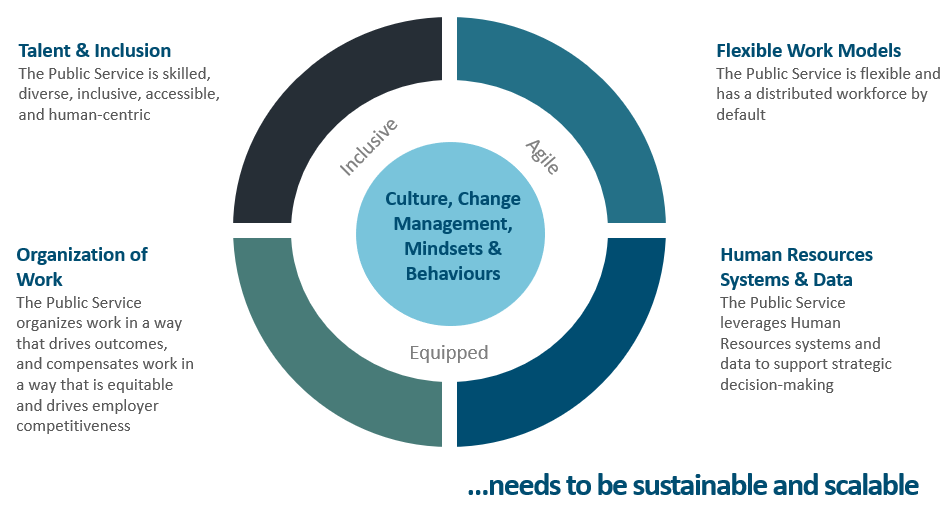
Text version
A 3-layered circular diagram which includes an outer circle (representing four future of work imperatives), an inner circle (representing the three areas of focus for Beyond2020) and the centre (titled Culture, Change Management, Mindsets & Behaviors).
The outer circle is divided into 4 equal sections, highlighting the future of work imperatives:
- Talent & Inclusion: the Public Service is skilled, diverse, inclusive, accessible, and human-centric.
- Flexible Work Models: the Public Service is flexible and has a distributed workforce by default.
- Human Resources & Data: the Public Service leverages Human Resources systems and data to support strategic decision-making.
- Organization of Work: Public Service organizes work in a way that drives outcomes, and compensates work in a way that is equitable and drives employer competitiveness.
The inner circle highlights the 3 areas of focus for Beyond2020
- Agile
- Inclusive
- Equipped.
The diagram includes a note highlighting that the framework to enable a future-ready workforce needs to be sustainable and scalable.
 Making it real: from a vision to a planFootnote 6 with an ambitious agenda
Making it real: from a vision to a planFootnote 6 with an ambitious agenda
| 4 Imperatives | Talent & Inclusion | Flexible Work Models | Organization of Work | Human Resources Systems & Data |
|---|---|---|---|---|
| Foundations |
|
|
|
|
| Discovery & Planning |
|
|
|
|
| Future of Work Readiness |
|
|
|
|
| Culture, Change Management, Mindsets & Behaviours
A public service that embodies the future of work vision and the four imperatives therein |
||||
Key partners and stakeholders
Treasury Board
Responsible for establishing compensation and terms and conditions of employment, setting policy direction for people management and maintaining a healthy, diverse, inclusive, bilingual and safe workplace.
Deputy Heads
Deputy Heads are accountable for human resources management within their organizations.
Privy Council Office
Supports the Clerk as Head of the Public Service, including directing public service-wide people management priorities.
Public Service Commission
Safeguards the integrity of the staffing system and the non-partisanship of the public service and manages the tools for public service recruitment.
Public Services and Procurement Canada
The central purchasing agent, real property manager, treasurer, accountant, pay and pension administrator, and linguistic authority (i.e., translation services) for the public service.
Canada School of Public Service
Provides learning, training, and professional development opportunities to public servants and helps Deputy Heads meet the learning needs of their organizations.
Shared Services Canada
Delivering information technology (IT) and network services to partner organizations to support the delivery of federal programs and services.
Bargaining Agents
Approximately 209K unionized members represented by 17 bargaining agents, negotiated in 28 Group Collective Agreements. 60% of unionized members are represented by the Public Service Alliance of Canada.
Hot issues
| Item | Action required | Deadline |
|---|---|---|
| Mandatory vaccination in the Public Service |
|
Winter 2022 [This information has been redacted] |
| Total compensation and collective bargaining | [This information has been redacted] | [This information has been redacted] |
| NextGen Human Resources and Pay Solution |
|
Winter 2022 |
| Modernization of the Official Languages Act |
|
February 2022 |
| Senior Leaders Strategy |
|
|
| [This information has been redacted] | [This information has been redacted] | [This information has been redacted] |
| 2022 benefit plan premium rate update |
|
By January 15, 2022 |
| Phoenix Litigation |
|
January 2022 |
| Pay equity implementation |
|
Spring 2022 and ongoing |
| Re-appointment of the Public Sector Integrity Commissioner |
|
The re-appointment must be approved by both Houses and complete by March 26, 2022 |
Annex A – People Management – Distributed by Law
Treasury Board as Employer
Under Financial Administration Act
- Responsible for Human Resources management in public service, including determining terms and conditions of employment, pensions, compensation and benefits (including pay, hours, leave travel and other expenses)
- Determines Human Resources requirements of public service and provides for classification
- Negotiates collective agreements with bargaining agents
- May establish policies, programs or directives with respect to strike management, discipline, disclosure of wrongdoing in the public service, prevention and resolution of harassment and employment equity, other Human Resources matters not specifically assigned to others
- May establish policies or issue directives respecting exercise of Human Resources powers granted by Financial Administration Act to deputy heads including oversight
- May delegate authorities to deputy heads, subject to terms and conditions it considers appropriate
- Reports annually to Parliament
Under Public Service Employment Act
- May establish qualification standards and professional development programs
- May establish current and future needs of the public service
- May regulate development, probation, the definition of promotion and appointment to level
- Reports annually to Parliament
Under Employment Equity Act
- Identifies and eliminate employment barriers
- Implements policies and make accommodations to enable representation
Under Public Sector Labour Relations Act
- May establish policies or directives with regard to informal conflict management systems
Under Pay Equity Act
- Responsible for implementing pay equity in the core public administration and Royal Canadian Mounted Police
Under Official Languages Act
- Responsible for general direction and coordination of policies and programs relating to implementing Parts IV,V,VI of Official Languages Act
Under Public Servants Disclosure Protection Act
- Responsible for promotion of ethical practices and establishing a code of conduct
More generally
Under Financial Administration Act
- Acts on matters and establishes policies related to general administrative policy; financial management; internal audit
President, Secretary, Comptroller General, and Chief Human Resources Officer
- Treasury Board may delegate authorities, subject to any terms and conditions it considers appropriate
- Chief Human Resources Officer’s authorities limited to Human Resources Managers, Employment Equity, Official Languages, Values & Ethics, and employer provisions in Public Service Employment Act
Deputy Heads
Under Financial Administration Act (direct authorities, i.e. not delegated by Treasury Board)
- Establish learning, training and development needs
- Provide awards
- Set standards of discipline
- Demote or terminate employees
- Assess performance
Under Public Service Employment Act
Establish merit criteria, area of selection and assessment methods
- Determine if, when, and how to staff positions
- Deploy to and within own organization
- Are accountable to Public Service Commission for exercise of staffing authorities
Under Employment Equity Act
- Identify, implement and report on measures to identify and eliminate barriers
Under Public Sector Labour Relations Act
- Hear and decide grievances relative to decisions and actions in own organization
Under Public Servants Disclosure Protection Act
- Responsible for establishing a code of conduct and internal procedures and designating a senior officer
More generally
Under Financial Administration Act
- Determine organizational and work requirements
- Accountable to Parliament for measures taken to organize resources of the department to deliver departmental programs in compliance with government policies and procedures
- Performance of other specific duties assigned under other acts related to administration of department
FPSLREB
Under Public Service Employment Act
- Hears and decides staffing complaints
- Offers mediation services to assist parties to resolve staffing complaints
- Reports annually to Parliament
Under Public Sector Labour Relations Act
- Administers collective bargaining and grievance adjudication systems for the federal public service
- Offers mediation services to assist parties to resolve disputes
- Administers Part II, Canada Labour Code, for the public service
- Conducts compensation research and analysis
- Reports annually to Parliament
Under Public Sector Equitable Compensation Act
- Deals with pay equity complaints
Public Services and Procurement Canada as Receiver General
Under Department of Public Works and Government Services Act
- Provides for pay, employee benefits, superannuation and pension services and administration
Clerk, Privy Council Office
Under Public Service Employment Act
- Reports annually to Prime Minister on the public service
- Responsible for administering selection processes for deputy heads and Governor in Council appointees
Public Service Commission
Under Public Service Employment Act
- Appoints or provides for appointment to and within public service at request of deputy heads
- Investigates allegations of fraud, political interference, breach of political activity provisions, and errors or omissions with regard to external appointments
- Administers political activity provisions
- Sets terms and conditions, establishes policy and makes regulations related to appointments, revocation, corrective action and political activity
- Oversees authority delegated to deputy heads, conducts audits and studies
- Makes recommendations to the Governor in Council with regard to exclusion approval orders and applicable regulations or requirements
- Provides staffing and assessment services, some of which are on a cost-recovery basis
- Reports annually to Parliament and may make special reports
Certified Bargaining Agents
- Represent their membership with respect to Human Resources matters subject to collective bargaining or other matters about which they may be consulted
Canada School of Public Service
Under Canada School of Public Service Act
- Formulates and provides training, orientation and development programs for public service managers and employees
- Supports deputy heads in meeting the learning needs of their organizations
- Carries out research into public management and administration
- Contributes to a culture of continuous learning and public service excellence
Public Sector Integrity Commissioner
Under Public Servants Disclosure Protection Act
- Investigates and decides on matters related to disclosure and reprisal, while the Public Servants Disclosure Protection Tribunal hears and decides on complaints related to reprisal linked to a disclosure of wrongdoing in the workplace
Commissioner of Official Languages
Under Official Languages Act
- The Commissioner of Official Languages ensures compliance with and investigates allegations about breaches of the Act
Canadian Human Rights Commission
Under Canadian Human Rights Act
- The Canadian Human Rights Commission administers the Act, including carrying out investigations related to discrimination based on a prohibited ground and referring matters to the Canadian Human Rights Tribunal
Under Employment Equity Act
- Ensures compliance with the Employment Equity Act
Under Pay Equity Act
- Ensures compliance with the Pay Equity Act
Office of the Comptroller General at a Glance
In this section
Who we are
Mandate
The Comptroller General is responsible for government-wide direction and leadership in the areas of financial management, management of assets, and internal audit
These comptrollership functions are the foundation of the delivery of programs and services to Canadians – departments and agencies count on our leadership, and these lenses embedded in decision-making at Treasury Board
Total Budget
$52.3M
Employee Snapshot
- 299 Full-Time Equivalents
-
Breakdown by classification:
- Administrative Services: 34%
- Financial management: 30%
- Economics/Social sciences: 14%
- Executive: 13%
- Other: 9%
Management Team

Roch Huppé
Comptroller General

Samantha Tattersall
Assistant Comptroller General, Acquired Services & Assets

Monia Lahaie
Assistant Comptroller General, Financial Management

Christine Walker
Assistant Comptroller General, Financial Management Transformation

Mike Milito
Assistant Comptroller General, Internal Audit
What we do: Business lines
Financial Management Sector
- Focused on strengthening government-wide financial management, oversight, and reporting, and building capacity in specialized areas
Acquired Services and Assets Sector
- Focused on strengthening the management of assets and acquired services through policies, advice, and capacity building functions for federal procurement, real property, materiel management, investment planning, and project management communities
Internal Audit Sector
- Focused on strengthening the internal audit function government-wide, which contributes to sound risk management, control and governance processes
Financial Management Transformation Sector
- Focused on establishing strategic direction, policies, and guidance for all Government of Canada financial management systems including: finance, procurement, real property, asset and materiel management, grants and contributions, investment and project management
Why Comptrollership Matters

|
Effective resource management controls are foundational to trust in Government
|
 
|
It underpins the assets and services we own and buy
|

|
It provides assurance on government practices and activities
|

|
Which is supported by diverse functional communities across government
|
Our Impact Across Government
Comptrollership is the foundation of government, and the Comptroller General provides the leadership, direction, and support to departments to deliver on their mandates
Setting the rules and direction for how departments manage their business:
- Without effective management of internal services – management and accounting of resources, management of projects and assets, procurement, and management controls – government cannot effectively deliver programs and services
- Not only do we set the policies and establish delegation limits (e.g., contracting and project limits) to ensure consistency across the enterprise, we continually engage, advise, and guide departments in support of effective resource management
- Recognizing the impact of program delivery decisions on the Public Accounts, we work with departments to build capacity, find solutions and ensure credibility through Chief Financial Officer (CFO) Attestation and other tools
- Given the reset of Treasury Board policies, we are working with both practitioners and newly appointed Senior Designated Officials to provide guidance and tools to effectively manage their projects, assets, and procurements
- We provide deputy heads with assurance regarding the design and operation of the governance, risk management, and control processes in their organizations
Leading and developing the community:
- Co-consult deputy heads on the designation of CFOs and CAEs to ensure the right people with the right skills are placed in the right positions
- Develop our talent and support professionalization through government-wide recruitment and staffing, oversight of leadership programs, and development of training and learning, with a growing focus on Inclusion, Diversity, Equity, and Accessibility
- Work with professionals in departments to build capacity where there are identified needs (e.g., costing, real property management, financial systems, assurance and internal audit functions)
Supporting Treasury Board in its Management Board Role:
- Treasury Board Submissions and the Chief Financial Officer attestation should reflect our efforts of working with departments on their management frameworks
- In addition, we provide advice and analysis to support submissions (e.g., advice on cost estimates, financial risks, accounting implications)
Key activities
Financial Management
- Overseeing Public Accounts
-
Addressing key accounting issues and implementing accounting standards:
- Indigenous reconciliation/litigation and impact on Contingent Liabilities
- Impact of discount rates on pension accounting and reporting
- International assistance tools such as unconditionally repayable contributions
- Reviewing and challenging key costing initiatives (e.g., National Shipbuilding Strategy, Benefits Delivery Modernization, etc.) and building costing capacity across the GC
- As part of Financial Management Transformation, working with departments to ensure they have the software and tools required for complex modern financial management
Acquired Services and Assets
- Major renewal and transition to a new suite of Treasury Board policies by Spring 2022
- With partners (PSPC and ISC), increasing the diversity of bidders on government contracts with specific focus on indigenous procurement
- Supporting the management of Real Property through a new Centre of Expertise
- Working with the Canada School of Public Service to enhance project management capabilities and indigenous procurement
Internal Audit
- Providing advice and guidance to departments on the role of internal audit in support of their COVID responses
- Implementing a modern, renewed Vision for Internal Audit in response to the changing pace and complexity of the risk environment
- Performing internal audit work across government, focused on providing a range of independent internal audit services designed to add value and improve operations within large and small departments, including Regional Development Agencies
- Enhancing the role of internal audit in providing real-time advice and assurance in support of large transformation initiatives
Hot issues
| Item | Action required | Deadline |
|---|---|---|
| Renewal of 16 audit committee members in 13 departments |
|
February 2022 |
| [This information has been redacted] | [This information has been redacted] | [This information has been redacted] |
| Developing the Directive on the Stewardship of Financial Management Systems |
|
By March 31, 2022 |
| Publishing the President of the Treasury Board’s Fees Report for the 2020-21 Fiscal Year, as required by the Service Fees Act |
|
By March 31, 2022 |
Office of the Chief Information Officer at a Glance
In this section
What we do
The Office of the Chief Information Officer provides leadership, direction, oversight and capacity building for information management, information technology, government security, access to information, privacy, and internal and external service delivery.
- Setting strategic direction and priorities
- Developing and administering legislation and policies
- Overseeing and enabling digital initiatives
- Delivering platforms and services
- Building functional communities
Who we are
Mandate
The Office of the Chief Information Officer provides strategic direction and leadership in the pursuit of excellence in information management, information technology, security, privacy and access to information across the Government of Canada. To facilitate this work, the Office of the Chief Information Officer also provides support and guidance on capacity building and project management and oversight.
Total Budget
$57.4M
Employee Snapshot
316 Full-Time Equivalent (FTE) positions
-
Breakdown by classification:
- Administrative Services: 32%
- Computer Systems: 25%
- Economics/Social sciences: 32%
- Executive: 11%
Management Team

Catherine Luelo
Chief Information Officer of Canada

Paul Wagner
Assistant Deputy Minister, Transformation; Interim Chief Technology Officer

Sonya Read
A/Assistant Secretary, Digital Policy and Services

Denis Skinner
Executive Director Digital Change
Where we fit in the digital landscape
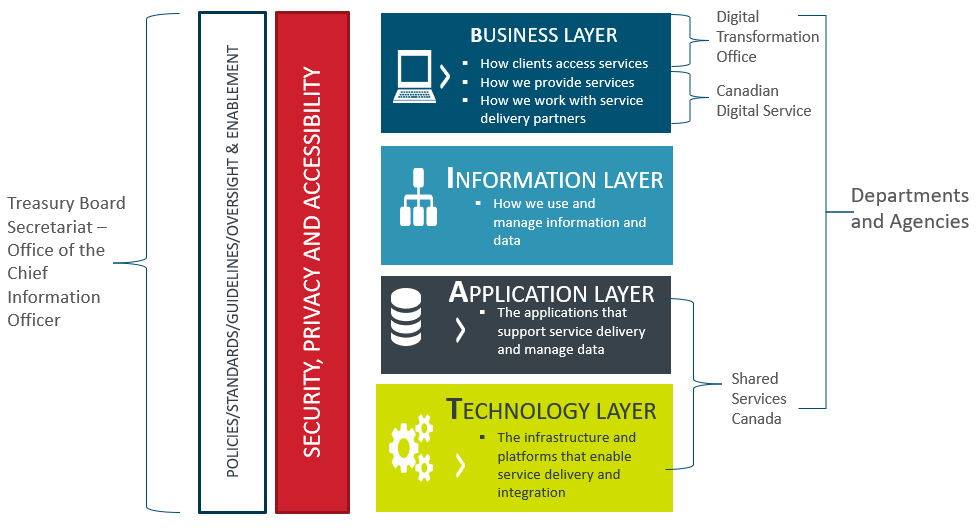
Text version
There are four layers to the way in which the government provides services to Canadians: Business layer, Information layer, Application layer and Technology layer. There are also overarching policy, security and accessibility lenses through which we enable digital. Each organization plays a different but important role in realizing our objectives.
How we deliver
How we deliver: strategic direction and priorities
The Office of the Chief Information Officer sets out enterprise digital transformation objectives and priorities through strategic planning and governance activities:
- Setting the strategic operational and policy direction for Government of Canada for information technology, information management and data, open government, service, digital accessibility and supporting enterprise planning and reporting, through the Digital Operations Strategic Plan.
- Establishing priorities for enterprise shared services and the enablement of digital government transformation.
- Establishing and supporting enterprise governance for decision making.
- Working with partners and stakeholders to advance priorities.
- Facilitating innovation and experimentation in service design and delivery, information, data, information technology and cyber security.
Key Priorities: Enterprise Information Technology Strategy and investment plan, 5th National Action Plan on Open Government and Open Government Strategy.
How we deliver: legislation and policy
The Office of the Chief Information Officer supports the administration, development, oversight and implementation of key legislation and administrative policies for the Government of Canada:
- Administration and performance oversight of legislation and policies related to access to information and privacy across the federal government, and the mainstreaming of open government and transparency.
- Development, management, and performance oversight of whole of government administrative policies (Service and Digital, Government Security).
- Establishes a consistent enterprise-wide cyber security posture and enabling the secure and trusted delivery of Government of Canada programs and services to Canadians.
- Supporting the adoption of the Government of Canada’s Digital Standards.
Key priorities: Access to Information Review, Privacy Act modernization, enterprise information technology standards, new accessibility standard for information and communications technology, new standard on systems that manage information and data, security screening modernization.
How we deliver: overview of legislation and policy
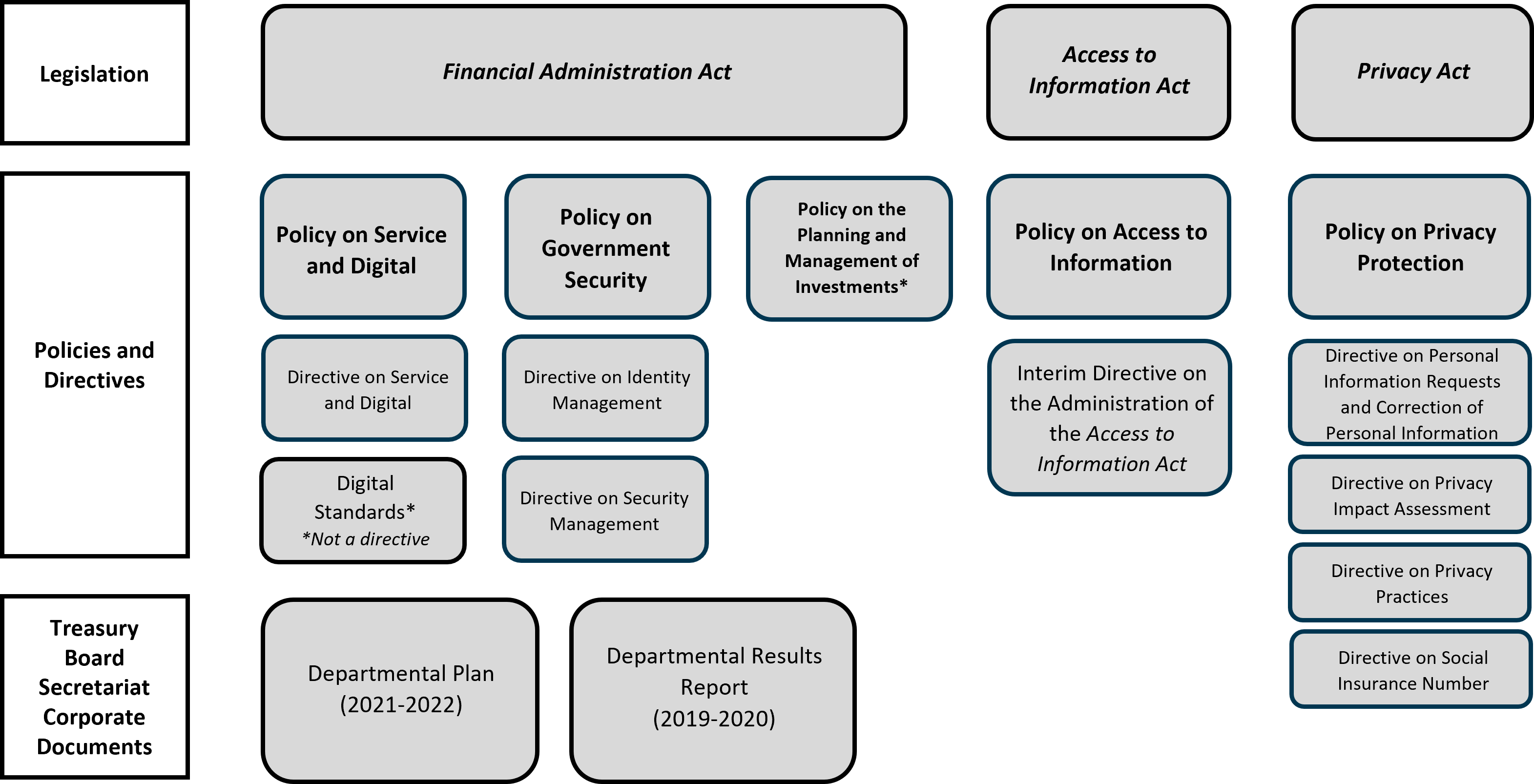
Text version
This image depicts the organization of the legislation, policies, directives, and TBS corporate documents that govern how OCIO operates. Beginning at the top of the chart, the foundational legislation from which all TBS policies and directives derive from are listed: the Financial Administration Act, the Access to Information Act, and the Privacy Act. The graphic then depicts the key policies that stem from these pieces of legislation, as well as the directives that apply to each policy. Finally, the bottom row of the graphic shows the most recent TBS corporate documents, the Departmental Plan (2021-2022) and the Departmental Results Report (2019-2020).
*The Policy on the Planning and Management of Investments is held by the Office of the Comptroller General.
How we deliver: oversight and enablement
The Office of the Chief Information Officer supports the successful implementation of major transformation initiatives through digital investment oversight and digital enablement initiatives and activities:
- Provides expert advice to support the Deputy Minister Committees on Core Services and Enterprise Priorities and Planning as well as establishing and deploying a team dedicated directly to four of the largest digitally-enabled departmental transformation initiatives.
- Exercises oversight of the management of digitally-enabled projects and programs, information technology, enterprise architecture, enterprise data management.
- Establishing guidance to support innovative practices and technologies, including open-source and open-standard applications, and agile application development.
- Working with departments to review and endorse digital initiatives, projects and investments, and review results.
Key priorities: Mature governance structures for digital programs, ePayroll, addressing technology risk and funding sustainability.
How we deliver: platforms and services
The Office of the Chief Information Officer acts as a business owner, and also delivers platforms and services to departments and agencies, as well as to Canadians to support its mandate:
- Provides strategic leadership and oversight of digital integration by ensuring the appropriate digital platforms are in place to facilitate both internal public service operations as well as service delivery to Canadians.
- Acts as an open and digital incubator – adopting product management practices and facilitating innovation on enterprise digital platforms related to open government and open data, information management, digital collaboration, system interoperability and service delivery.
- Providing enterprise digital platforms to enable open government and services to enable access to information and access to personal information.
Key priorities: Proof of vaccination credentials, advancing a Government of Canada digital identity, Rapid Testing Attestation System, Access to Information Online System and Open Data platform.
How we deliver: building communities
The Office of the Chief Information Officer provides leadership and direction to functional communities across the Government of Canada to support workforce capacity and capability:
- Supporting recruitment, development and recognition of digital leaders and talent that is representative of the diversity of Canada.
- Supporting training and professionalization.
- Provide policy advice and guidance, interpretation and support.
These include:
- Computer Systems community: about 20,000 employees.
- Other ‘digital’ employees: about 10,000 employees.
- Access to information and privacy: 3,000-4,000 employees.
- Security: about 1,000 employees.
- Service and open data/government communities.
Key Priorities: Mature the Chief Information Officer/Heads of Information Technology community, establish a community development office for access to information and privacy professionals, establish a community for chief data officers.
Hot Issues
| Item | Action required | Deadline |
|---|---|---|
| Access to Information Review | The Government committed to a full review of the access to information process and to holding a broad engagement process during the review, including engagement with the general public, Indigenous groups and representatives, federal institutions and other consultation activities. [This information has been redacted] | [This information has been redacted] |
| National Security and Intelligence Committee of Parliamentarians Report 2021 |
|
February 2022 |
Annex: Glossary
- Applications:
- software or a computer program designed to help people perform an activity.
- Architecture:
- the design of how software applications communicate.
- Enterprise:
- in the content of Digital Government, meaning across departmental silos.
- Enterprise Architecture:
- organizing the organization to deliver value through software solutions.
- Infrastructure:
- underlying systems required to host and deliver software solutions.
- Integration:
- methods to link applications and platforms that facilitate the flow of data, enabling end-to-end services.
- Interoperability:
- the ability for software systems to exchange information and coordinate.
- Open Data:
- structured data that is machine-readable, freely shared, used and built on without restrictions.
- Open Government:
- a culture of governance that promotes the principles of transparency, integrity, accountability and stakeholders’ participation in support of democracy and inclusive growth
- Service Channels:
- the means of accessing a service, including paper, phone and online. Online services are delivered through applications.
Office of Public Service Accessibility at a Glance
In this section
Who we are
Mandate
- Co-develop, launch, and advance the implementation of Nothing Without Us: An Accessibility Strategy for the Public Service of Canada
- Provide advice and leadership to federal departments and agencies as they prepare to meet the requirements of the Accessible Canada Act.
- Launch and manage the Centralized Workplace Fund to invest in research, tools and innovation aimed at improving workplace accommodation practices and removing barriers that create a need for accommodation.
Total Budget
$10.2 million
Over three years (2021-2024) to develop and implement the Public Service Accessibility Strategy.
$10 million
Over five years (2019-2024) to invest in projects to advance workplace accessibility, via the Centralized Enabling Workplace Fund.
Employee Snapshot
- 19 Full-Time Equivalent positions.
- Classifications range from Research Analysts, Policy and Program Advisors, Communication Specialists, and Senior Executives. Most have lived experiences with disabilities.
Our Senior Management

Yazmine Laroche
Deputy Minister, Public Service Accessibility

Alfred MacLeod
Assistant Deputy Minister, Public Service Accessibility
Office of Public Service Accessibility’s Launch
- The Government of Canada has put greater emphasis on implementing anti-racism, equity, accessibility and inclusion initiatives in recent years.
- The Office of Public Service Accessibility was established in 2018 (and renewed for 2021-2024) to prepare the public service to meet or exceed the requirements of the Accessible Canada Act (ACA).
- The Accessible Canada Act (2019) and regulations aim to create a barrier-free Canada for persons with disabilities by January 1, 2040.
- The Office of Public Service Accessibility supports the President of Treasury Board and the Minister of Employment, Workforce Development and Disability Inclusion in removing barriers to accessibility and disability inclusion in the federal public service, and in the hiring of 5,000 new public servants with disabilities by 2025.
What we do: Accessibility in the Public Service
- Accessibility in the workplace focuses on removing and preventing barriers for all employees, and in particular, employees with disabilities who often face systemic barriers in the workplace.
- Barriers include anything that prevents people from fully and equally participating in Canadian societies. Some barriers are very visible, like a building without an access ramp. Other barriers are less visible, like instructions written in complex language.
-
The prevalence of disabilities among Canadians (whether physical, sensory, cognitive, or mental health-related) is common:
- Approximately 1 in 5 Canada (22%, or more than 6.2 million people), over the age of 15 identify as having a disability in Canada.
- Disabilities can refer to any impairment, whether permanent, temporary or episodic in nature.
- Almost everyone is likely to experience some form of disability ─ temporary or permanent ─ at some point in life.
Environmental Analysis: Current State
Employees with disabilities:
- The Public Service’s core administration employs over 200,000 people across Canada, and 5.2% of these employees identify themselves as having a disability.
- People with disabilities are the only equity group currently underrepresented in the public service workforce. Despite 9% workforce availability in Canada, people with disabilities only represent 5.2% of the core public service workforce.
Barriers facing employees with disabilities:
- physical barriers in the workplace
- technological barriers in the use of platforms and tools
- knowledge gaps in how to procure goods & services in an accessible manner and how to design programs and services accessibly from the start
- behavioural and attitudinal barriers in how to serve Canadians in a barrier-free manner and how to nurture diverse and inclusive teams
As the largest employer and service provider in Canada, the federal public service can make a significant difference in the identification, prevention and removal of barriers for people with disabilities.
The Accessibility Strategy for the Public Service
- Released in 2019 to help prepare the public service to become a model of accessibility in Canada and abroad.
- Guided by the principle of nothing without us and co-developed through extensive consultations with public servants through cross-Canada townhalls, engagement with experts, online surveys, and in collaboration with the Persons with Disabilities Champions and Chairs Committee of the federal public service.
- Not legally binding (unlike the ACA legislation and regulations). Instead, it serves as a roadmap to help the public service prepare to identify and remove accessibility barriers in their workplaces.
- Public progress reports on the implementation of the Strategy were released in December 2020 and in December 2021.
Five Strategy Goals:
- Improve recruitment, retention, and promotion of persons with disabilities
- Enhance the accessibility of the built environment
- Make information and communications technology usable by all
- Equip public servants to design & deliver accessible programs and services
- Build an accessibility confident public service
The Office of Public Service Accessibility’s Key activities
The Office of Public Service Accessibility supports Government of Canada accessibility, capacity-building and sustainability by:
- Providing public service leadership and a centre of expertise to support the implementation of the Accessibility Strategy’s five goals.
- Drawing awareness to accessibility and disability inclusion through regular outreach and engagement activities with employees and stakeholders across Canada and abroad.
- Investing in projects through the new Centralized Enabling Workplace Fund (CEWF) and co-designing accessible solutions to help remove barriers and improve accommodation for employees and clients with disabilities.
- Equipping the public service to better support employees with disabilities and to better serve Canadians with disabilities through new accessible tools and resources.
- Developing and testing a Government of Canada Workplace Accessibility Passport to help facilitate conversations between employees and managers about the tools and supports employees need to succeed in their jobs and throughout their careers.
Progress & Next Steps
There has been progress on accessibility since 2019, but impact will take time to fully realize.
| Example | What we do | What’s next |
|---|---|---|
| Identifying barriers and co-designing solutions | We raise awareness on barriers, provide input on accessibility, and support greater inclusion of persons with disabilities in co-developing initiatives that impact their workplace. | Expanding successful co-developed initiatives to the broader public service (e.g. Government of Canada Accessibility Passport). |
| Building accessibility capacity and sustainability across the public service | We support departments and agencies in building accessibility capacity by identifying and sharing accessibility resources and tools. | Enabling greater collaboration by identifying best practices and highlighting innovative solutions across the public service (e.g. Communities of Practice). |
| Measuring, reporting, and improving supports | We provide advice and collaborate on data and measurement initiatives across the public service to consider barriers facing persons with disabilities and improve accountability. | Embed accessibility into traditional reporting and data collection and create tips and resources for measurement on accessibility. |
| Changing our culture to be accessibility confident | We engage with employees and leaders across the government to raise awareness in accessibility, reduce stigma and help cultivate a public service that is accessible by default. | Ongoing engagement and learning events throughout the year, to build competencies in accessibility. |
The Office of Public Service Accessibility’s Key Partners & Stakeholders
The Office of Public Service Accessibility works closely with:
-
Key departments involved in public service management and/or diversity, inclusion and accessibility:
- Employment and Social Development Canada (ESDC)
- Public Service Commission (PSC)
- Shared Services Canada (SSC)
- Public Services and Procurement Canada (PSPC)
- Canada School of Public Service (CSPS)
- Privy Council Office (PCO)
- Statistics Canada
-
At Treasury Board of Canada, this includes close collaboration with:
- Office of the Human Resource Officer (OCHRO)
- Office of Chief Information Officer (OCIO)
- Office of Comptroller General of Canada (OCG)
-
Other partners:
- Departments and agencies preparing for the Accessible Canada Act
- Employee networks and communities of practice
- External accessibility experts in Canada or abroad
The Office of Public Service Accessibility’s Priorities in 2021-22
The Office of Public Service Accessibility supports Government of Canada accessibility capacity-building and sustainability by:
-
Leadership and Governance in Accessibility:
- Continue to support those Deputy Ministers responsible for specific elements of the Strategy to make measurable progress.
-
Focus on removing barriers and improving workplace accommodation practices by:
- funding innovative pilots that support accessibility in public service;
- working with key functional communities (Human Resources, Chief Information Officers, managers, real property) to build their capacity in accessibility and disability inclusion; and
- advancing the development of an accessible Government of Canada Passport.
-
Strategic Advice and Measurement:
- Launch resources, tools and guidance to support departments and agencies in improving accessibility and measuring progress.
- Support Employment and Social Development Canada in preparing guidance for the Accessible Canada Act regulations on accessibility plans, feedback mechanisms and progress reports.
- Provide progress updates on the implementation of the Strategy.
-
Outreach and Engagement:
- Deliver learning and engagement events to mobilize and equip key audiences to remove barriers.
- Continue virtual engagement across the Government of Canada and with external stakeholders to improve accessibility and disability inclusion.
- Increased engagement to ensure that accessibility and disability is embedded in broader diversity and inclusion efforts, working closely with other Employment Equity groups and alleys.
Annex 1: Legislative Overview
The Accessible Canada Act aims to create a barrier-free Canada through the identification, removal and prevention of barriers to accessibility wherever Canadians interact with areas under federal jurisdiction.
To facilitate this work, the Act establishes new machinery…
- Chief Accessibility Officer
- Accessibility Commissioner
- The Canadian Accessibility Standards Development Organization
The legislation applies to all sectors in the federal jurisdiction…
- Parliament
- Government of Canada
- Telecommunications
- Banking
- Transportation
And specific duties are assigned to all entities within these sectors…
- Develop and publish annual accessibility plans in consultation with persons with disabilities
- Establish a feedback process
- Publish progress reports
Public Service Accessibility
Board of Management and Renewal – November 2021
Nothing Without Us – The Accessibility Strategy for the Public Service (2019):
- Co-developed with persons with disabilities, employee networks, Persons with Disabilities Chairs & Champions (PwDCCC).
-
Serves as roadmap to help make the public service lead by example in accessibility, focusing on 5 goals:
1 Improve recruitment, retention, and promotion of persons with disabilities
2 Enhance the accessibility of the built environment
3 Make information & commun-ications technology usable by all
4 Equip public servants to design & deliver accessible programs & services
5 Build an accessibility confident public service
Employees with disabilities in the public service:
- Are underrepresented in the public service (5.2% of employees in the Core Public Administration identified as having a disability in FY2019-20, below the 9% workforce availability).
- Report higher rates of work-related stress, harassment, and discrimination in Public Service Employee Survey 2019-20.
Example of barriers:
- Physical barriers in the workplace
- Technological barriers (platforms & tools)
- Knowledge & skills gaps in the Government of Canada (from procurement to design of programs/services)
- Behavioural & attitudinal barriers (in how to serve Canadians in a barrier-free manner, and how to build and nurture diverse and inclusive teams)
Accessible Canada Act (2019):
- Aims to create barrier-free Canada for persons with disabilities by January 2040.
- Focus on identifying, preventing and removing barriers with input from persons with disabilities.
- Applies to all federally-regulated sectors.
- First proposed regulation will require federal organizations to publish accessibility plans by December 31, 2022.
Key Milestones (2019-2021):
- Governance established (Deputy Minister, Assistant Deputy Minister, technical working groups)
- Key initiatives launched (Workplace Fund, Inventories, Internship)
- Ongoing co-design of key projects (GC Workplace Accessibility Passport)
- New tools and guidance released regularly (find it on Accessibility Hub)
- Ongoing work to build competency, sustain momentum and report on progress
- (Engagement and learning events, annual reports)
Current challenges & opportunities:
- Slower progress in improving accommodations and reaching goal of hiring 5,000 employees by 2025.
- Truly embedding accessibility upfront in new GC systems & approaches (return to workplace, HR-Pay).
- Building accessibility confidence in all functional communities.
- Harmonizing definitions, tracking, and reporting on the impact of our accessibility efforts.
New accessibility resources to support departments & agencies:
- Progress update 2021 (release on December 3)
- Accessibility Hub updates (“one-stop” approach)
- Self-Assessment Tool for organizations
- “Bootcamps” for Accessibility Plans
Enterprise-wide opportunities for impact in accessibility in 2022:
1. Embedding accessibility into the return to the workplace / future of work
Key focus this year:
-
Accessibility in a hybrid environment:
- Facilities
- Technology
- Culture
2. Removing employment barriers
Key focus this year:
- Workplace accommodations
- Duty to Accommodate update
- Accessibility Passport
- Accelerating progress on 5,000 hires
3. Delivering barrier-free services to internal and external clients
Key focus this year:
- Accessible communications
- Accessible Information and Communications Technology & service standards (NextGen, HR-Pay, GCJobs)
- Accessible Procurement
4. Building & sustaining a culture of accessibility & inclusion
Key focus this year:
- Build accessibility capacity and skills in the IT, HR managers, real property, procurement, policy and service communities
- Accessibility in GoC policy & governance
Deputy Ministers’ Accessibility Group’s discussions will prioritize progress updates, challenges to be resolved, key actions/next steps,and measuring & tracking change in accessibility in these areas.
Lessons learned and strategic linkages across portfolios:
- Enterprise-level (governance) is helping drive progress, but ownership, leadership, action also required at organizational-level.
- Transition from the “what” to the “how” is required to remove specific roadblocks in key areas (workplace accommodations).
- Allyship and intersectionality are growing – opportunity to move from Diversity & Inclusion to IDEA (inclusion, diversity, equity and accessibility).
- Need for timely and streamlined disaggregated data. Tracking progress, for example in hiring, can be complex (different platforms, systems, reporting requirements).
The Canadian Digital Service at a Glace
In this section
Who we are
Mandate
Established in 2017 to help “change the way the government designs and delivers services” to better meet people’s needs
The Canadian Digital Service (CDS) is mandated to:
- Partner with departments to help improve how they design, build, and deliver their priority public-facing services
- Build well-tested, secure, and reliable platform building blocks that departments can use to build or improve services more quickly, consistently, and affordably
- Provide advice on technology and service investments
- Work in the open, sharing code, tools, lessons, and more
Total Budget
$23.1M
Employee Snapshot
110 Full-Time Equivalent (FTE) positions, scaling to ~130 with Budget 2021 funding
- Computer Systems: 53%
- Economics/Social Sciences: 18%
- Administrative Services: 15%
- Information Services: 11%
- Executives: 3%
Management Team

Anatole Papadopoulos
A/Chief Executive Officer

Alex MacEachern
Chief of Staff

Andrea Gilbrook
Director of Talent & Operations

Chelsea Novak
Director of Outreach

Elodie Bouneau
Executive Director of Platform

John Millons, Director
Director of Policy & Internal Site Reliability Engineering

Wendy Luciani
Executive Director of Partnerships
The Team
- 80% of employees are from outside federal government
- Hiring from companies like Shopify, Google, and Mozilla
- Recruiting global talent (United States, United Kingdom, France, etc.)
- 80% of staff are on tours of service (e.g., term, interchange)
- As the Canadian Digital Service transitions to an ongoing organization, many employees will be offered indeterminate positions
- Employees are located across Canada based on where talent is, including Ottawa, Kitchener-Waterloo, Toronto, and Montreal
- Over 50% of employees live and work outside of Ottawa
- Pre-COVID‑19 tools and practices in place for distributed teams
- The Canadian Digital Service maintains a unique brand and public communications to the Treasury Board Secretariat, directly contributing to successful talent acquisition
Methods and practices
- Put users first by researching and testing directly with the people using services, at every stage, with a focus on measurable outcomes
- Lean, independent, multi-disciplinary teams that break traditional functional silos
- Continuous, incremental improvement through frequent code releases and testing with users, on cloud infrastructure
- Code, project documentation, and lessons learned are published in the open, and have been adapted and reused by other governments as a result
- Accessible, inclusive services and products that work on any device or screen
What we do: Business lines
- The Canadian Digital Service works to achieve its mandate through two business units:
- Platform: Building and maintaining platform services, which are offered to departments and agencies as building blocks that can be integrated into their own services.
- Partnerships: Working with departments to help them improve how they deliver digital services that are easy to use, secure, and accessible.
- Since launching, the Canadian Digital Service has worked with partners to:
- Help 2M Canadians navigate and understand what COVID‑19 benefit programs were available to them
- Build COVID Alert, downloaded by more than 6.7M Canadians to alert individuals to potential COVID‑19 exposures
- Help more than 28,000 Veterans and family members discover what benefits they may be eligible for
- Send more than 22.2M email and SMS notifications on behalf of 173 government programs and services
- Build services that help businesses, including applying to solve public challenges, and reporting cybercrime and online fraud
Overview: Platform
- The Canadian Digital Service builds and maintains platform services. These are building blocks that departments integrate into their services to create better, more consistent experiences for people and businesses
- These building blocks are reusable components, designed to solve common pain points that people experience when trying to access a government service (e.g., fill out a form; receive an update)
- Platform services offer a number of benefits to departments and to people and businesses in Canada:
- They can be integrated into a government service in as little as 2 days, enabling departments to respond nimbly to urgent public needs
- They create efficiency, as departments don’t have to reinvent the wheel for common needs
- The components are tested regularly with users of government services
- They are bilingual, accessible to – and tested with – persons with disabilities, and are very secure
- Platform services are typically free and self-serve for a department to use
Platform Example 1: GC Notify
- Provides notifications by email or text message to update people about their service status or to provide other important information
- Can prevent people from needing to contact a call centre or filing Access to Information requests to receive basic information about their services
- This service is mature and growing; as of November 2021, it has provided over 22.2 million messages on behalf of over 173 services across 36 departments
- GC Notify is “self-serve ” to use for departmental service teams, meaning it can scale rapidly without needing to add new employees to the Canadian Digital Service
- GC Notify is used extensively to help departments communicate essential information to people in Canada during the pandemic; for example, Health Canada used Notify to send email updates to over 6 million subscribers
Platform example 2: GC Forms
- Allows departments to build simple, modern, mobile-friendly web forms for use in their services, providing an accessible alternative to existing PDFs and paper/fax processes which are cumbersome for Canadians
- Research has shown that many government forms are difficult to understand, take months to create, and their data is difficult to use by departments
- GC Forms will make it easier for a department to:
- Quickly build a form that is easy for the user to understand and fill in, and
- Integrate into their own systems without costly and error-prone data entry, making services more efficient to offer
- This service is in early development; as of November 2021, 8 government forms are using this prototype platform
Overview: Partnerships
The Canadian Digital Service Partnerships engages with Government of Canada departments and agencies, to help them change how they design and deliver services. It offers four services based on lessons learned from the last few years, that can meet departments where they are and address different types of problems:
Explorations
to learn about the current service delivery conditions, challenges, and opportunities to identify next steps to improve outcomes using digital best practices
Consulting
to provide feedback and support as trusted peers, in the form of advice or time-boxed hands-on help, to improve service outcomes
Embedded teams
a targeted and dedicated investment, to help a department change how they design and deliver their priority services
Learning resources
Curate and publish materials departments can use to make the case for change and build capacity within their own organizations
Partnership example 1: COVID Benefits Finder
- Goal: Help Canadians find COVID-related benefits and supports that they may be eligible for
- Launched in May 2020, the COVID Benefits Finder has helped over 2 million Canadians navigate and understand the new social programs that were created to protect their well-being during the pandemic
- Although the new benefits were unfamiliar to Canadians, 70% of visitors found the services that they were looking for, and 40% used the tool to apply right away
- The service is live and was developed in partnership with Service Canada
Partnership example 2: Explorations
- Goal: Provide recommendations and a roadmap of next steps based on digital best practices tailored to a service’s current operating reality
- The Canadian Digital Service has completed 4 explorations over the past year:
- Service Canada Temporary Foreign Worker Program: provided design and technical recommendations on how to improve the way temporary foreign workers can report abuses and unsafe working conditions
- Natural Resources Canada CanmetENERGY: provided recommendations on how to upgrade the tools energy advisors and builders use to deliver cost-effective, net-zero new and retrofitted homes
- Natural Resources Canada Flood Mapping: provided recommendations on how to improve access to critical flood risk data for residents, builders, homebuyers, and emergency planning and preparedness organizations
- Immigration, Refugees and Citizenship Canada refugee information needs: provided recommendations on how to improve refugee resettlement information services to meet newcomers’ needs
Partnership example 3: Consulting services
- Goal: Provide departments with time-limited advice, drawing from multidisciplinary expertise
- The Canadian Digital Service started piloting consulting services in January 2021 and has worked with over 45 services across 30 different departments
- Health Canada: Advice on how to relay complex information about the approved COVID‑19 vaccines in a simple and accessible manner
- Global Affairs Canada: Advice on the feasibility of creating an app vs building upon existing similar tools, including partner negotiation strategies, costing, and meeting the Government of Canada Digital Standards
- Shared Services Canada: Technical support for the team managing the migration to cloud for contact centre infrastructure that supports all government call centres
How we scale digital practices across the government
The Canadian Digital Service uses its on-the-ground experience to help scale modern delivery practices across government:
- Assisted the Treasury Board Secretariat in changing federal public opinion research guidance to enable user research
- Hired the first federal Code for Canada fellows and helped make policy changes that enabled five more departments to hire fellows
- Enabled several partner departments to deploy services in the cloud for the first time
- Worked with the Office of the Chief Information Officer and the Office of the Chief Human Resources Officer to pave the way for multidisciplinary teams
- Enabling compensation for research participants, consistent with research and international best practices
- Published a tool that generates policy-compliant Privacy Notices for design research activities, making it easier for departments to gather feedback and learn from their users
The next year at the Canadian Digital Service
- We’re transitioning from a quasi-pilot program to an ongoing-funded organization in government and recruiting a new Chief Executive Officer (Assistant Deputy Minister)
- Package will be shared for green light to launch the search process
- We’re testing our new Partnerships Consulting to offer it more fully, and deploying our first Embedded Teams
- We’re also looking at how we can more directly help departments recruit digital service professionals
- We’re continuing to scale Platform work and beginning to build new tools to support service teams across government, including a modern design system
- Due to high demand, we’re looking to offer platform services for use by provincial, territorial, and municipal governments, [This information has been redacted]
Hot Issues
| Item | Action required | Deadline |
|---|---|---|
| COVID Alert Exposure Notification Service | A decision is required on the future of COVID Alert. Targeted programmatic funding for the Canadian Digital Service expires in March 2022, and further investment will be required to keep it operational, accessible and secure. | January 2022 |
| Canadian Digital Service Chief Executive Officer Recruitment | Approval is required to launch the public recruitment process for the Canadian Digital Service’s CEO. The Canadian Digital Service has been without a permanent Chief Executive Officer since September 2021. | January 2022 |
Annex: Canadian Digital Service Products Delivered
| Product | Department | Phase |
|---|---|---|
| National COVID‑19 exposure notification system (COVID Alert) | Health Canada | Live (active partnership) |
| Find financial help during COVID‑19 | Employment and Social Development Canada | Alpha |
| GC Notify | GC-wide (platform product) | Beta (active platform service) |
| GC Forms | GC-wide (platform product) | Alpha (active platform service) |
| Help Canadians access the Canadian Pension Plan Disability Benefit | Employment and Social Development Canada | Alpha |
| Find relevant benefits for Veterans | Veterans Affairs Canada | Live |
| Check security of government websites (Intranet only) | Treasury Board Secretariat | Beta |
| Issue a challenge to innovators | Privy Council Office | Live |
| Help people and businesses report cybercrime | Royal Canadian Mounted Police | Beta |
| Accessing home energy data | Natural Resources Canada | Alpha |
| Briefing app | Treasury Board Secretariat / Canada School of Public Service | Alpha |
| Run regulatory consultations online | Treasury Board Secretariat | Discovery |
| Make it easier for suppliers to identify contracts | Public Services and Procurement Canada | Discovery |
| Reschedule a citizenship test | Immigration, Refugees, and Citizenship Canada | Retired |
| Help Canadians with low income claim tax benefits | Canada Revenue Agency | Retired |
| Phase | Description |
|---|---|
| Discovery | A research phase to explore user needs and possible solutions to meeting those needs. |
| Alpha | A prototyping phase to find and test ways to meet user needs. |
| Beta | A public release phase to test the solution at scale and make iterations. |
| Live | The service is fully released and continues to be monitored and improved upon. |
| Retired | The service is spun down and no longer offered. |
Centre for Greening Government at a Glance
Who we are
Mandate
The mandate of the Centre for Greening Government (CGG) is to provide leadership toward net-zero, climate-resilient and green Government of Canada operations
Total Budget
Salary / Operation and Management:
$1.4M
Greening Government Fund
$5M
Employee Snapshot
- 13 Full-Time Equivalent (FTE) positions
-
Breakdown by classification:
- Executive: 15%
- Administrative Services: 7%
- Economics/Social sciences: 57%
- Architecture, Engineering and Land Survey: 7%
- Audit, Commerce and Purchasing: 7%
- Physical Sciences: 7%
Management Team

Nick Xenos
Executive Director
What we do: Greening Government Strategy (GGS) overview
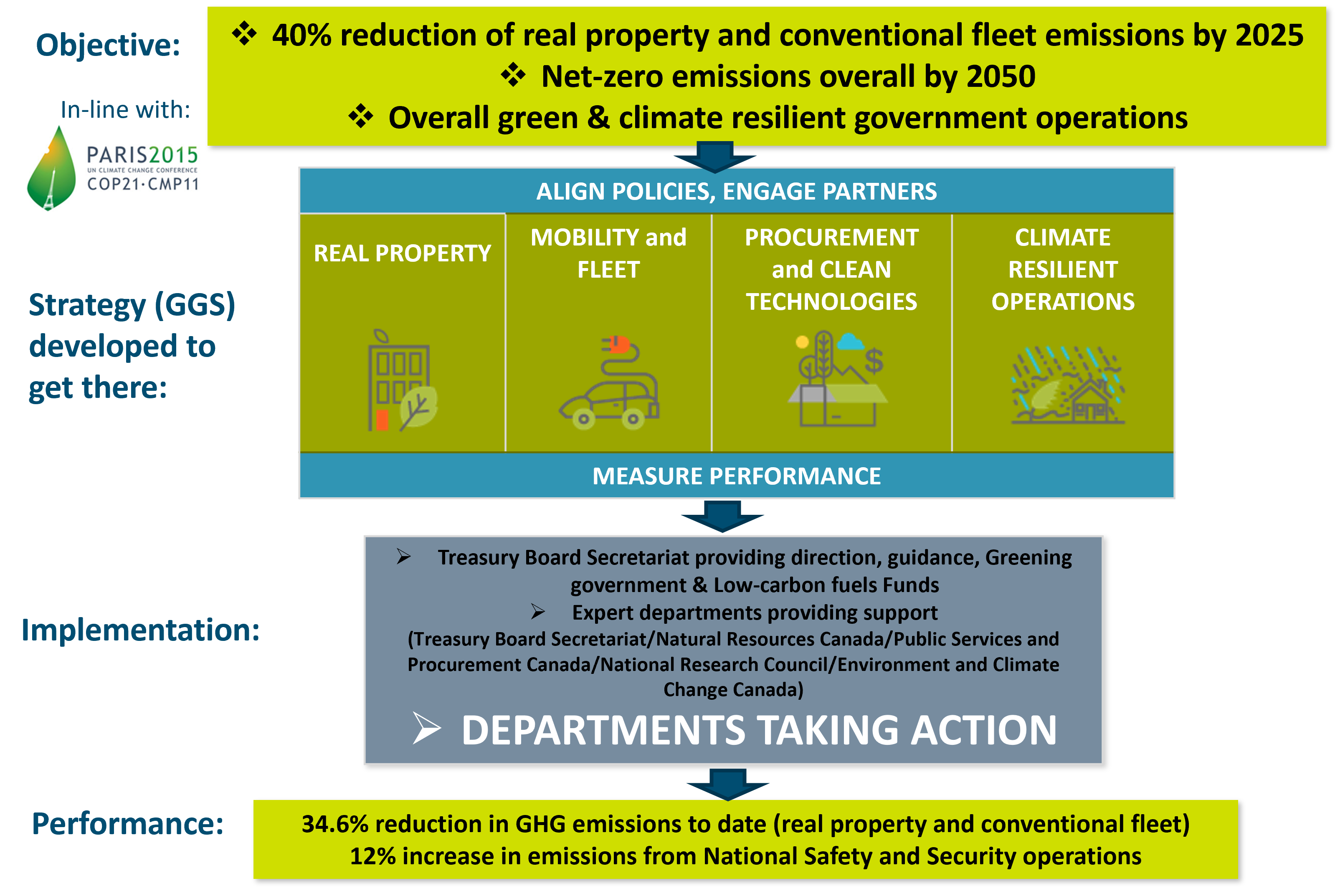
Text version
This graphic is a visual representation of the key areas of the Greening Government Strategy.
It includes the Strategy’s key objectives:
- 40% reduction of real property and conventional fleet emissions by 2025
- Net-zero emissions overall by 2050
- Overall green & climate resilient government operations
There are four key areas of focus: real property, mobility and fleet, procurement and clean technologies and climate resilience. Aligning policy, engaging partners and measuring performance are cross-cutting areas of the Strategy.
Departments are taking action towards greening government objectives.
Treasury Board Secretariat provides direction and guidance, and manages the Greening Government Fund and the Low-carbon fuel Procurement Fund.
Expert departments providing support include Treasury Board Secretariat, Natural Resources Canada, Public Services and Procurement Canada, National Research Council, Environment and Climate Change Canada
The performance results are as follows: 34.6% reduction in GHG emissions to date (real property and conventional fleet) and 12% increase in emissions from National Safety and Security operations.
Key activities
Key activities:
-
Leads and coordinates the implementation of the Greening Government Strategy and the Policy on Green Procurement, including by:
- providing strategic advice, practical guidance and tools to departments for net-zero, climate-resilient and green real property, fleet, and procurement
- convening interdepartmental working groups and external stakeholder communities of practices to share expertise, successes, and best practices
- Tracks and publicly discloses greenhouse gas emissions (GHG) reductions for federal operations
- Administers:
- the Greening Government Fund (approx. $5M/year) to fund projects in departments that reduce emissions
- the new Low-Carbon Fuel Procurement Program ($228M/8 years starting in 2023-24) to support the purchase of low-carbon fuels for government marine and aircraft
Partners and stakeholders:
- Collaborates with, guides and, directs federal departments to green their operations with a focus on 27 major federal emitters
- Works with provinces, territories, industry and non-governmental organizations on amplifying greening efforts across the country
Expenditure Management Sector at a Glance
In this section
Who we are
Mandate
The Expenditure Management Sector supports Treasury Board Ministers by:
- Managing the supply process for Parliamentary approval of voted appropriations and related authorities
- Administering central votes for the effective operations of government;
- Planning and coordinating expenditure management initiatives, such as reviews of departmental programs
- Ensuring that departments and programs monitor and report on results, including horizontal data analytics on innovation programming
- Providing a whole-of-government perspective on matters related to direct program spending (e.g., Canada Student Grants, Public Transit Infrastructure Fund) and management of compensation within the federal government
Total Budget
$18.8M
Employee Snapshot
- 130 Full-Time Equivalent (FTE) positionsFootnote 7
-
Breakdown by classification:
- Administrative Services: 11%
- Economics/Social sciences: 69%
- Financial Management: 5%
- Students: 1%
- Executive: 14%
Management Team
Annie Boudreau
Assistant Secretary
613-290-5254
Rod Greenough
Executive Director
Expenditure Strategies and Estimates Division
343-572-0957
Richard Stuart
Executive Director
Expenditure Analysis and Compensation Planning Division
613-858-1019
Ritu Banerjee
Executive Director
Results Division
613-220-2300
What we do: Business lines
Expenditure Management Sector / Expenditure Strategies and Estimates Division
- Responsible for leading government-wide Estimates and supply exercises, and managing Treasury Board Central Votes; also works closely with other central agencies in managing the fiscal framework and the Budget process
Expenditure Management Sector / Expenditure Analysis and Compensation Planning Division
- Res ponsible for overseeing government-wide compensation planning by ensuring government decisions are aligned with the principles laid out in the Policy Framework for the Management of Compensation and supporting Open Data through the development and maintenance of a public Government of Canada InfoBase, which contains historical expenditure and results data
Expenditure Management Sector / Results Division
- Responsible for implementing the Policy on Results as well as supporting capacity development in the performance measurement and evaluation communities; they provide structured approaches to spending reviews and support analytical studies and data development/experimentation to improve the impact of innovation programming
Key activities
Expenditure Strategies and Estimates Division - Key activities
Key activities:
- Preparing Estimates and supply, and related public reporting and guidance on Treasury Board authorities
- Tracking, and reporting on, the progress of funding decisions through the supply process (e.g. to support Budget-Estimates Alignment)
- Supporting work on the Budget forecast and implementation, with the Department of Finance and Privy Council Office
- Supporting the Minister at Committee appearances
Partners and stakeholders:
- Treasury Board Secretariat Program Sectors; Office of the Comptroller General; Office of the Chief Human Resources Officer; and Corporate Services Sector
- Department of Finance and Privy Council Office
- Parliamentary Budget Officer
- Chief Financial Officers in departments and agencies and their teams
Expenditure Analysis and Compensation Planning Division - Key activities
Key activities:
- Developing compensation analyses and cost projections in support of collective bargaining and compensation policy development
- Conducting pay equity research and analysis
- Ensuring timely/transparent online reporting of Public Accounts, Departmental Results, government-wide financial and people management data
Partners and stakeholders:
- Treasury Board Secretariat Program Sectors; Office of the Comptroller General; Office of the Chief Human Resources Officer; Employee Relations and Total Compensation
- Department of Finance and Privy Council Office
- Offices of the Superintendent of Financial Institutions and the Chief Actuary
Results Division - Key activities
Key activities:
-
Guiding and supporting departments in managing for results through:
- Exercising challenge function on Treasury Board Submissions
- Annual review of Departmental Evaluation Plans
- Setting requirements for reporting programs’ gender and diversity impacts (Canadian Gender Budgeting Act)
- Managing the publication of Departmental Plans and Departmental Results Reports
- Assessing performance in the Results ‘Area of Management’
- Designing frameworks and processes for spending reviews
Partners and stakeholders:
- Treasury Board Secretariat Program Sectors and Policy Centres, Privy Council Office, Department of Finance, Statistics Canada, Women and Gender Equality
- Evaluation and performance measurement communities, program managers, corporate reporting units, policy designers
Hot Issues
| Item | Action required | Deadline |
|---|---|---|
| Tabling of Supplementary Estimates (C) and Main Estimates | Support the President’s appearance before Parliamentary Committee in respect of the Estimates |
Tabling Date: February 2022 Committee appearance: March 2022 |
| (Mandate Letter) Ensure government policy is developed through an intersectional lens by strengthening the quality of life framework, gender-based analysis plus, and integrated climate lenses | Provide advice to President | Winter 2022 |
| (Mandate letter) Conduct comprehensive and continuous strategic policy review of government programs | Provide advice to President | Winter 2022 |
Regulatory Affairs Sector at a Glance
In this section
Who we are
Mandate
The Regulatory Affairs Sector (RAS) supports Canada’s regulatory system by:
- reviewing and challenging regulatory submissions and Orders in Council
- providing central oversight and modernization of Canada’s regulatory system
- promoting regulatory cooperation
- supporting the federal regulatory community and departments
Total Budget
$10.9M
Employee Snapshot
71 Full-Time Equivalent (FTE) positions
Breakdown by classification:
- Administrative Services: 8%
- Economics/Social sciences: 81%
- Executive: 11%
Management Team

Tina Green
Assistant Secretary, Regulatory Affairs

Barbara Moran
Executive Director, Governor-in-Council Operations

James van Raalte
Executive Director, Regulatory Policy and Cooperation Division
What we do: Business lines
Regulatory Policy and Cooperation Division (RPCD)
- Establishes and supports implementation of federal regulatory policy and initiatives, regulatory modernization, and advancement of regulatory cooperation
Governor-in-Council Operations (GiCO)
- Supports Treasury Board, Part B in the approval of Governor-in-Council (GIC) regulations and Orders in Council (OIC)
Key Activities: Regulatory Policy and Cooperation Division
Key Activities: Regulatory Policy and Cooperation Division
Key activities:
- Leads policy development and management of regulatory policy issues (Cabinet Directive on Regulation, policies and guidance)
- Leads Canadian participation in international and federal-provincial-territorial regulatory cooperation fora
- Coordinates regulatory reviews aimed at identifying novel regulatory approaches to support economic growth and innovation
- Leads Centre for Regulatory Innovation that promotes a whole-of-government approach to regulatory experimentation
- Supports the External Advisory Committee on Regulatory Competitiveness
Partners and stakeholders:
-
Regulatory cooperation:
- Federal, provincial and territorial regulatory departments and agencies
- United States Office of Information and Regulatory Affairs
- The European Commission
- Organization for Economic Cooperation and Development.
- Industry and consumer associations - Business Council of Canada, Canadian Federation. of Independent Business, Chamber of Commerce
- Community of Federal Regulators
Key Activities: Governor-in-Council Operations
Key activities:
- Performs a challenge function on regulatory proposals and provides analysis to support Treasury Board Ministers
- Provides guidance and support to regulatory departments and agencies as they develop regulatory proposals
-
Centre of Regulatory Expertise also provides:
- expertise in analytical requirements of regulatory proposals, such as cost-benefit analysis, the small business lens, and the one-for-one rule
- training and support to regulators on analytical requirements
- monitoring and reporting of elements of the regulatory system (e.g., one-for-one rule, Administrative Burden Baseline, forward regulatory plans)
Partners and stakeholders:
- Privy Council Office in managing the procedural aspects of Governor-in-Council decision-making
- Justice Canada in ensuring coherence between legal instruments and policy objectives
- Federal regulatory departments and agencies
- Industry and consumer associations
Hot Issues
| Item | Action required | Deadline |
|---|---|---|
| [This information has been redacted] | [This information has been redacted] | [This information has been redacted] |
| Advancing Canada-United States regulatory cooperation | Meeting with the Acting Director of the United States Office of Management and Budget to solidify the path forward | Earliest convenience / contingent upon Senate Confirmation hearings |
| Chair ad hoc Deputy Minister committee meeting on regulatory modernization | Call next meeting to advance priorities on Regulatory Modernization | TBD (January-February 2022) |
| Tabling of 2nd Annual Regulatory Modernization Bill (ARMB) | Support to the President in leading the bill through Parliament | TBD (early to mid 2022) |
| [This information has been redacted] | [This information has been redacted] | [This information has been redacted] |
| Initiate Round 3 of Targeted Regulatory Reviews | Approval of topics for Round 3 and launch review with support of implicated departments | TBD (dependant upon interdepartmental consultations, underway) |
Program Sector at a Glance
In this section
Who we are
Mandate
Program sectors support the Treasury Board by reviewing Memoranda to Cabinet and Treasury Board submissions from federal organizations; providing advice, guidance and support to federal organizations in their implementation and application of policies; and providing advice on and presenting proposals to Treasury Board Ministers.
Total Budget
$22.7M
Employees
150 Full-Time Equivalent (FTE) positions across four sectors
- Economic
- Government Operations
- International Affairs, Security and Justice
- Social and Cultural
Assistant Secretaries

Anuradha Marisetti
Economic Sector

Heather Sheehy
Government Operations Sector

Denis Stevens
International Affairs, Security and Justice Sector

Suzy McDonald
Social and Cultural Sector
Economic Sector (ES)
Anuradha Marisetti
Assistant Secretary
2 Directorates (41 employees)
Elaine Hood
Resource Division, Executive Director
Naresh Debidin
Industrial Division, Executive Director
Portfolio of Organizations
Departments
- Agriculture and Agri-Food Canada
- Infrastructure Canada
- Fisheries and Oceans Canada
- Environment and Climate Change Canada
- Innovation, Science and Economic Development Canada
- Natural Resources Canada
- Transport Canada
- Statistics Canada
Agencies, Councils and Commissions
- Canadian Food Inspection Agency
- Impact Assessment Agency of Canada
- Atlantic Canada Opportunities Agency
- National Research Council
- Canadian Nuclear Safety Commission
- Canadian Space Agency
Crown Corporations
- VIA Rail Canada Inc.
- Federal Bridges Corporation
- Freshwater Fish Marketing Corporation
- Business Development Bank of Canada
Government Operations Sector (GOS)
Heather Sheehy
Assistant Secretary
2 Directorates (34 employees)
Lori Goodyear
Central Agencies and Shared Services, Executive Director
Jordana Heaton
Government Acquisitions and Procurement Services, Executive Director
Portfolio of Organizations
Departments
- Public Services and Procurement Canada
- Shared Services Canada
- Canada Revenue Agency
- Canada School of Public Service
- Public Service Commission
- Privy Council Office
- Treasury Board of Canada Secretariat
- Finance Canada
Agencies, Councils and Commissions
- House of Commons
- Senate Ethics Officer
- Office of the Auditor General
- Office of the Privacy Commissioner
Crown Corporations
- Canada Development Investment Corporation
- Canada Lands Company Ltd.
- Royal Canadian Mint
- Canada Post
- National Capital Commission
International Affairs, Security and Justice Sector (IASJ)
Denis Stevens
Assistant Secretary
3 Divisions (39 employees)
Laura Oleson
International Affairs, Executive Director
Shannon Grainger
Security and Justice, Executive Director
Catherine Jobin
Defense and Immigration, Executive Director
Portfolio of Organizations
Departments
- Department of National Defense
- Communications Security Establishment
- Global Affairs Canada
- Public Safety and Emergency Management
- Canada Border Services Agency
- Canadian Security Intelligence Service
- Correctional Service of Canada
- Parole Board of Canada
- Royal Canadian Mounted Police
- Department of Justice
- Immigration, Refugees and Citizenship Canada
- Immigration and Refugee Board
Crown Corporations
- Export Development Canada
- Canadian Commercial Corporation
Social and Cultural Sector (SCS)
Suzy McDonald
Assistant Secretary
2 Directorates (36 employees)
Ian Miller
Employment and Social Development Canada and Canadian Heritage Portfolio, Executive Director
Lynne Tomson
Indigenous and Northern Affairs Canada and Health Portfolio, Executive Director
Portfolio of Organizations
Departments
- Canadian Heritage
- Veterans Affairs Canada
- Women and Gender Equality
- Employment and Social Development Canada
- Health Canada
- Public Health Agency of Canada
- Canadian Institute of Health Research
- Indigenous Services Canada
- Crown-Indigenous Relations and Northern Affairs Canada
Crown Corporations
- Canadian Mortgage and Housing Corporation
- Library and Archives Canada
- National Arts Centre
- Six national Canadian museums
Enabling Functions at a Glance
In this section
Enabling Functions
| Corporate Services | Human Resources Division | Internal Audit and Evaluation | Legal Services | Priorities and Planning | Strategic Communications and Ministerial Affairs |
|---|---|---|---|---|---|
|
Karen Cahill |
Doreen Gagnon |
Natalie Lalonde |
François Nadeau |
Mallika Nanduri Bhatt |
Kelly Acton |
| These groups work closely together as enabling functions to support internal operations within the Treasury Board Secretariat. | |||||
Corporate Services Sector
Who we are: Corporate Services Sector
Mandate
Provides support to the Secretary in financial management, security, information management and technology, facilities and materiel management, and Phoenix-related damages claims processing
Total Budget
$60.7MFootnote 8
Employee Snapshot
271 full-time equivalent (FTE) positions
- Breakdown by classification:
- Computer Systems: 41.2%
- Administrative Services: 25.2%
- Financial Management: 19.6%
- Procurement: 5.7%
- Executives: 3.9%
- Economic / Social Sciences: 3.1%
- Other: 1.3%

Karen Cahill
Assistant Secretary
Chief Financial Officer Corporate Services Sector
What we do: Business lines – Corporate Services Sector
Financial Management
- Annual business and investment planning
- Estimates and Cabinet documents, including Treasury Board submissions
- Financial advisory services and corporate reporting
- Accounting services and management practices
- Corporate accounting and internal controls
Information Management and Technology
- Develop and support 124 software applications that are used by Canadians, other government departments, and internally to the Treasury Board Secretariat
- Provide Information Technology stewardship, security, governance, oversight and change management (enterprise architecture Information Technology planning and reporting, project and portfolio management)
- Ensure sound operational support for Treasury Board Secretariat cloud operations, Information Technology help desk service, and information management
Corporate Administration and Security
- Facilities management and asset management
- Mail and distribution services
- Security services and emergency management
- Procurement and contracting
- Translation and editing services
Claims Office
- Phoenix-related damages claims processing
Key activities: Corporate Services Sector
Key activities
- Works with the Human Resources Division to ensure a seamless transition to a hybrid workplace
- Leads departmental business planning, budgeting and forecasting, and accounting services
- Provides financial review of departmental Cabinet documents
- Leads the process for the development of Treasury Board Secretariat-led submissions and co-leads the process for the development of federal budget proposals for the department
- Ensures efficient operation of existing 100% cloud-based departmental information management / information technology systems, including GC enterprise applications accessed by other government departments, public institutions and the public
- Works with business partners on 15 concurrent departmental IT projects and manages 124 applications
- Delivers evergreen computer equipment and digital tools to employees and provides Information Technology help desk service
- Provides facilities management services to employees at 90 Elgin, 219 Laurier and 45 Sacre Coeur
- Coordinates security and emergency management planning and processes requests for security clearances
- Provides procurement and contracting services, and proactive disclosure of contracts over $10,000
- Coordinates translation and provides editing services to meet official languages requirements for delivery of documents
- Coordinates and provides guidance to departments for claims related to Phoenix
Partners and stakeholders
- Public Services and Procurement Canada, Shared Services Canada, sectors within the Treasury Board Secretariat
Hot Issues: Corporate Services Sector
| Item | Action required | Deadline |
|---|---|---|
| Broad financial situation |
|
Ongoing discussion |
| Addressing priorities related to COVID‑19 |
|
Ongoing; expected winter 2022 |
| Delegation of spending and financial authorities |
|
January 2022 |
| Sustainable cloud funding |
|
April 1, 2022 |
| Support to the Treasury Board |
|
Ongoing |
| Co-lead the Budget 2022 process with Priorities and Planning sector |
|
January 2022 |
Human Resources Division
Who we are: Human Resources Division
Mandate
The Human Resources Division (HRD) is responsible for providing strategic human resources advice, guidance and services to the Treasury Board Secretariat’s senior management, managers and supervisors, and employees.
Total Budget
$12,164,420
(includes Goods & Services, Salary and Corporate Costs received)
Employee Snapshot
- 115 Full-Time Equivalent (FTE) positions
-
Breakdown by classification:
- Personnel Services: 43%
- Administrative Services: 34%
- Clerical Services: 11%
- Economics/Social sciences: 4%
- Executive: 3%
- Student:3%
Management Team

Doreen Gagnon
Assistant Deputy Minister, Human Resources Division

Caroline Thouin
Senior Director, HR Operations and Executive Group Services

Nancie Cantin
Senior Director Corporate Programs and Human Resources Transformation

Lianna Ferran
Ombud and Director Office of the Ombud

Davor Dacic
Senior Advisor, HR Analytics, Research & Experimentation
What we do: Business lines – Human Resources Division
Office of the Ombudsman, Ethics and Conflict Resolution
- Provides guidance and a safe place for employees to raise concerns, informally manage workplace conflict, disclose wrongdoing, and manage ethical concerns
Corporate Programs, Innovation and Transformation
- Provides department-wide guidance and services in support accessibility, diversity and inclusion, official languages, talent acquisition strategies, Human Resources planning, corporate classification and renewal, professional learning, wellness, occupational health and safety and employee engagement and outreach to support co-creation initiatives.
Human Resources Operations and EX Services
- Operational staffing, classification, Centre of Expertise in labour relations; administers talent management, employee recognition, and succession planning; compensation, and management of Peoplesoft (Human Resources information system)
Human Resources Analytics, Research & Experimentation
- Supports decision making and Human Resources transformation initiatives through data analytics, research, design thinking, behavioural insight; supports Beyond 2020 plan through experimentation in the development of new tools, processes and potential digital initiatives that and supports horizontal Human Resources priorities.
Key activities: Human Resources Division
Key activities:
Providing services, guidance, and tools to address:
- Re-integration and optimized hybrid workplace and long-term future of work for the Treasury Board Secretariat
- Diversity, Inclusion and Accessibility
- Official Languages
- Harassment and violence in the workplace (Bill C-65)
- Leadership Development and Performance and Talent Management
- Recruitment
- Occupational Health and Safety
- Wellness
- Phoenix
- PeopleSoft Implementation/My GCHR Integration
Partners – supported by HRD :
- Champions at the Assistant Deputy Minister level - advocate for files
- Designated Officials - have an accountability rooted in law or policy
- Employee Networks and Communities (ENCs) – strong engagement with Employee Networks and Communities in the co- creation of initiative in support of mandated priorities
Stakeholders:
- Office of the Chief Human Resources Officer - provides central agency direction for people management
- Office of Public Service Accessibility - provides central agency direction for accessibility
- Public Services and Procurement Canada - administers GoC compensation
Hot Issues: Human Resources Division
| Item | Action required | Deadline |
|---|---|---|
| Policy on COVID‑19 Vaccination |
Status update on:
|
None |
| Treasury Board Secretariat Hybrid workplace | Departmental Updates through Deputies Portfolio Committee (DPC) | No immediate action |
Internal Audit and Evaluation Bureau
Who we are: Internal Audit and Evaluation Bureau
Mandate
Provide independent, objective assurance, advisory and neutral evaluation services.
Total Budget
$3.8M
Employee Snapshot
24 Full-Time Equivalent (FTE) positionsFootnote 9
- Breakdown by classification:
- Administrative Services: 38%
- Economics/Social sciences: 43%
- Executive: 9.5%
- Financial Administration: 9.5%

Natalie Lalonde
Director General Internal Audit and Evaluation
What we do: Business lines – Internal Audit & Evaluation
Internal Audit
- Provides independent and objective assessments of the effectiveness of Treasury Board Secretariat risk management, governance and control processes using a risk- based approach, with a focus on added-value
- Conducts fraud-related administrative investigations for Treasury Board Secretariat, as required
Evaluation
- Provides neutral assessment of departmental program relevance and performance to support management’s priorities
Key activities: Internal Audit and Evaluation
Key activities:
- Implements integrated audit and evaluation plan, including internal audits, evaluations, reviews, lessons learned, advisory/consultation services and targeted research and monitors management action plans to address recommendations
- Secretariat for the Audit Committee and the Performance Measurement and Evaluation Committee
- Reviews Cabinet documents to ensure future and past evaluation, performance measurement and audit requirements are present and accurate
- Supports sectors in refreshing logic models and related indicators, as part of maintaining performance information profiles
Partners and stakeholders:
- Deputy Heads of the department
- Sectors within the Treasury Board Secretariat
- Treasury Board Secretariat Audit Committee Members (external committee)
- Performance Measurement and Evaluation Committee Members (internal committee)
Hot Issues: Internal Audit and Evaluation Bureau
| Item | Action required | Deadline |
|---|---|---|
| Publishing the Internal Audit of Acquisition Cards | N/A. Memo to President for information prepared. | By January 31, 2022 |
Legal Services
Who we are: Legal Services
Mandate
The Attorney General of Canada, via the Department of Justice, provides legal services to the Treasury Board and the Treasury Board Secretariat. The Attorney General conducts litigation and provides legal advice and legislative services to government departments. The Attorney General represents the Crown and seeks to protect interests for the whole of government. The Attorney General acts in the public interest, including upholding the Constitution, the rule of law and respect for the independence of the courts.
Total Budget
$19.2M
The Treasury Board Secretariat pays $13.6M
- $9.2M for admin support and Charter challenges
- $4.4M in Operations & Maintenance for legal counsel
Employee Snapshot
101 Full-Time Equivalent (FTE) positionsFootnote 10
- Breakdown by classification:
- Administrative Services: 24%
- Paralegals: 10%
- Legal Counsel: 62 %
- Executives: 4%

François Nadeau
Executive Director and Senior General Counsel
Department of Justice
What we do: Business lines – Legal Services
Government Operations and Public Management Law Group
- Provides advisory services in support to the Treasury Board submission process, policy development, regulation-making and legislative drafting, and assists key sectors such as the Office of the Comptroller General, the Office of the Chief Information Officer, the Canadian Digital Service, Program Sectors, etc.
Labour and Employment Law Group
- Provides labour and employment litigation services on behalf of Treasury Board and separate employers before federal courts and tribunals
- Provides advisory services to the Office of the Chief Human Resources Officer on collective bargaining, discipline, pay equity, and policy making, including litigation support on Treasury Board Secretariat-led class actions
Centre for Labour and Employment Law
- Provides advisory services to all departments and agencies on a cost- recovery basis, including training to the Human Resources community
Key activities: Advisory and Litigation Services
Key activities:
- Advisory services to all Treasury Board Secretariat sectors on labour and employment, access to information and privacy, official languages, procurement, real property, grants and contributions, Crown corporations, digital government, policy development, legislative and regulatory drafting
- Litigation services to all agencies and departments before the Federal Public Sector Labour Relations and Employment Board, the Public Servants Disclosure Protection Tribunal, the Canada Industrial Relations Board, the Federal Court, and the Federal Court of Appeal
- Legal expertise at Justice in specific areas, such as: Federal Public Sector Labour Relations Act, Public Service Employment Act, Financial Administration Act, Appropriation Acts, Service Fees Act, Access to Information Act, Privacy Act, Official Languages Act, Lobbying Act, pensions and benefits
Partners and stakeholders:
- Treasury Board Secretariat – all sectors
- Department of Justice – National Litigation Sector, centres of expertise, legal services units of other government departments, legislative and regulatory drafters
- All government departments and agencies – advisory and litigation services
- Courts and tribunals (essential services during the COVID‑19 pandemic)
- Bargaining agents and private sector law firms
Hot Issues: Legal Services
| Item | Action required | Deadline |
|---|---|---|
| [This information has been redacted] | [This information has been redacted] | [This information has been redacted] |
Priorities and Planning
Who we are: Priorities and Planning
Mandate
Priorities and Planning (P&P) is responsible for key policy and planning activities that underpin both government-wide management excellence and efficient and effective corporate governance within the Secretariat. P&P also provides leadership for planning processes within the Secretariat to ensure coherence in corporate priorities, progress on key files, clear accountabilities, and continuous improvement
Total Budget
$9.25 Million
Employee Snapshot
67.3Footnote 1 Full-Time Equivalent (FTE) positions
- Breakdown by classification:
- Administrative Services: 10%
- Economics/Social sciences: 77%
- Executive: 13%

Mallika Nanduri Bhatt
Assistant Secretary Priorities and Planning
What we do: Business lines – Priorities and Planning
Policy, Planning and Performance
Enables departments to deliver more effective and efficient programs and services in accordance with modern management practices, and supports Treasury Board Secretariat accountability to Parliament and Canadians
- Supports the Treasury Board Secretariat’s core responsibility for providing leadership on administrative policy for the Government of Canada, including liaison to small departments and agencies
- Acts as the steward for the Treasury Board Policy Suite and the Management Accountability Framework
- Provides advice and support on Lobbying Act and Conflict of Interest Act
- Supports accountability to Parliament and Canadians by coordinating departmental plans and reports, and acting as the Treasury Board Secretariat’s departmental liaison to the Office of the Auditor General
Strategic Policy and Priorities Integration
Provides integrated, forward-thinking advice, and helps develop and deliver products for senior management to advance departmental priorities
- Leads and supports sectors in long-term horizontal initiatives (e.g., medium-term planning, budget, transition advice, results and delivery)
- Provides “surge support” for emerging priority initiatives in sectors across the Treasury Board Secretariat
- Supports experimentation across the Government of Canada, including through capacity building, functional leadership, and community support
Crown Corporation Centre of Expertise
Provides advice, guidance and expertise on Crown corporation matters from a horizontal perspective
- Supports the challenge function on Crown corporation corporate plans, budgets, and Treasury Board submissions from a horizontal perspective
Canada’s Free Agent Program
Together with three other departments, co-manages a talent program supporting employee mobility and simplifying hiring practices for managers across the public service needing time-limited staff
Treasury Board Secretariat Committees Secretariat
Provides the secretariat function for the department’s formal governance Committees
- Acts as secretariat for the Public Service Management Advisory Committee (PSMAC) and provides strategic advice and briefing materials to the co-chairs
Partners and stakeholders:
- Central agencies and other departments and agencies
- Heads of Federal Agencies
- Crown corporations
- Office of the Auditor General
- Agents of Parliament
- Commissioner of Lobbying
- Conflict of Interest and Ethics Commissioner
Hot Issues: Priorities and Planning
| Item | Action required | Deadline |
|---|---|---|
| Direction on the President’s 2021 mandate commitments | Direction | January 2022 |
| Treasury Board Secretariat 2022-23 Departmental Plan | Approval (President sign-off required) | January 2022 |
| Supplementary Information to the Departmental Plan – publication to the Treasury Board Secretariat Website | Approval of information on work at the Treasury Board Secretariat related to gender-based analysis plus, sustainable development and the Treasury Board Secretariat’s transfer payment programs | February 2022 |
| Management Accountability Framework (MAF) Government-wide and Departmental Reports | Approval | April 29, 2022 |
| Office of the Auditor General’s Audit on Human Resources Management (Tabling in March 2022) | Signature | February 2022 |
| Office of the Auditor General’s Audit on Gender Based Analysis Plus (Tabling in March 2022) | Signature | February 2022 |
| Office of the Auditor General’s Audit Plan Summary – Benefits Delivery Modernization | Signature | February 2022 |
| Office of the Auditor General’s Audit on Greening Government (Tabling in April 2022) | Signature | February/March 2022 |
Strategic Communications and Ministerial Affairs
Who we are: Strategic Communications and Ministerial Affairs
Mandate
Organize and manage meetings of the Treasury Board, manage Cabinet and Parliamentary Affairs, departmental Access to Information and Privacy as well as departmental communications, correspondence and briefings and supporting government-wide communications, including responsibilities for Canada.ca and federal identity, and policy instruments
Total Budget
$18.4M
Employee Snapshot
154 Full-Time Equivalent (FTE) positions
- Breakdown by classification:
- Program/Administrative Services: 84%
- Computer Systems: 5%
- Economics/Social sciences: 3%
- Executive: 8%

Kelly Acton
Assistant Secretary Strategic Communications and Ministerial Affairs
What we do: Strategic Communications and Ministerial Affairs
Communications
- Communications and Federal Identity Policy Centre
- Digital Transformation Office (Canada.ca)
- Strategic & Internal Communications
- Public & Parliamentary Affairs
- Digital Services (web, social media & multimedia)
Ministerial Services
- Departmental Access to Information and Privacy Office
- Ministerial Correspondence and Briefing Unit
- Treasury Board Submission Centre
- Cabinet Affairs
Key activities: Strategic Communications and Ministerial Affairs
Key activities:
- Support the President as chair of the Treasury Board and provide related agenda management, logistical support, process guidance working closely with Program Sectors, Expenditure Management Sector other central agencies
- Support the President in Parliament, in Cabinet, and in communicating with Canadians, working with partners across the Treasury Board Secretariat
- Support Secretary, Associate, Chief Human Resources Office, Chief Information Officer, Comptroller General, Deputy Minister of the Office of Public Service Accessibility & Chief Executive Officer of the Canadian Digital Service in Government of Canada-wide communications activities and lead on key horizontal communications
- Provide policy centre leadership & guidance for communications across government, including the Canada.ca web presence and related products & services
- Manage Treasury Board Secretariat’s digital communications services and presences (web, social media & multimedia) including 13 social media accounts on 5 platforms, including Twitter, Facebook, YouTube, Instagram, and LinkedIn
- Coordinate and provide expertise to all Treasury Board Secretariat Sectors as part of the administration of the Access to Information Act and the Privacy Act
Partners and stakeholders:
- Daily interaction with the President’s Office on many fronts
- Guidance and coordination with other government departments; extensive work with the Privy Council Office
Hot Issues: Strategic Communications and Ministerial Affairs
| Item | Action required | Deadline |
|---|---|---|
| Access to Information Act (Legislative review and ongoing requests) | Communicate the outcome of the review and ongoing issues management | Ongoing |
| Collective Bargaining | Issues management, strategic pivot to proactive communications stance as needed | Ongoing |
| Vaccination policy public reporting & litigation | Entreprise coordination of public reporting & issues management | Ongoing |
| Easing restrictions at federal worksites | Entreprise coordination of internal communications & issues management | Ongoing |
| Return to secure posture (Treasury Board & Cabinet) | Manage ongoing operational issues & establish future steady state | Q4 2022 |
| Harassement & discrimination lawsuits (e.g. Thompson & Diallo) | Communications coordination with implicated depts & issues management | Ongoing |
| Appearance for Supplementary Estimates C (TBC) | N/A | February/March |





